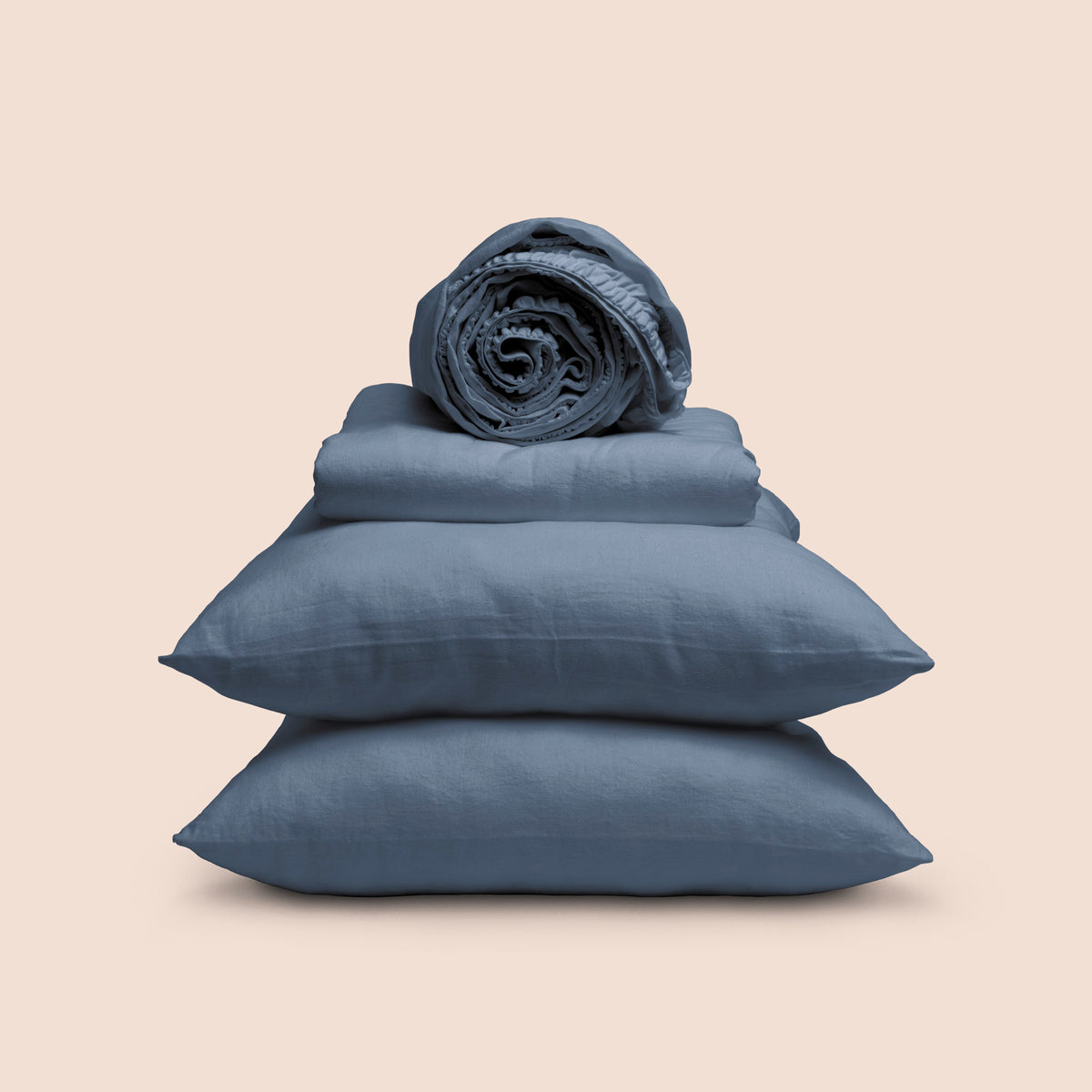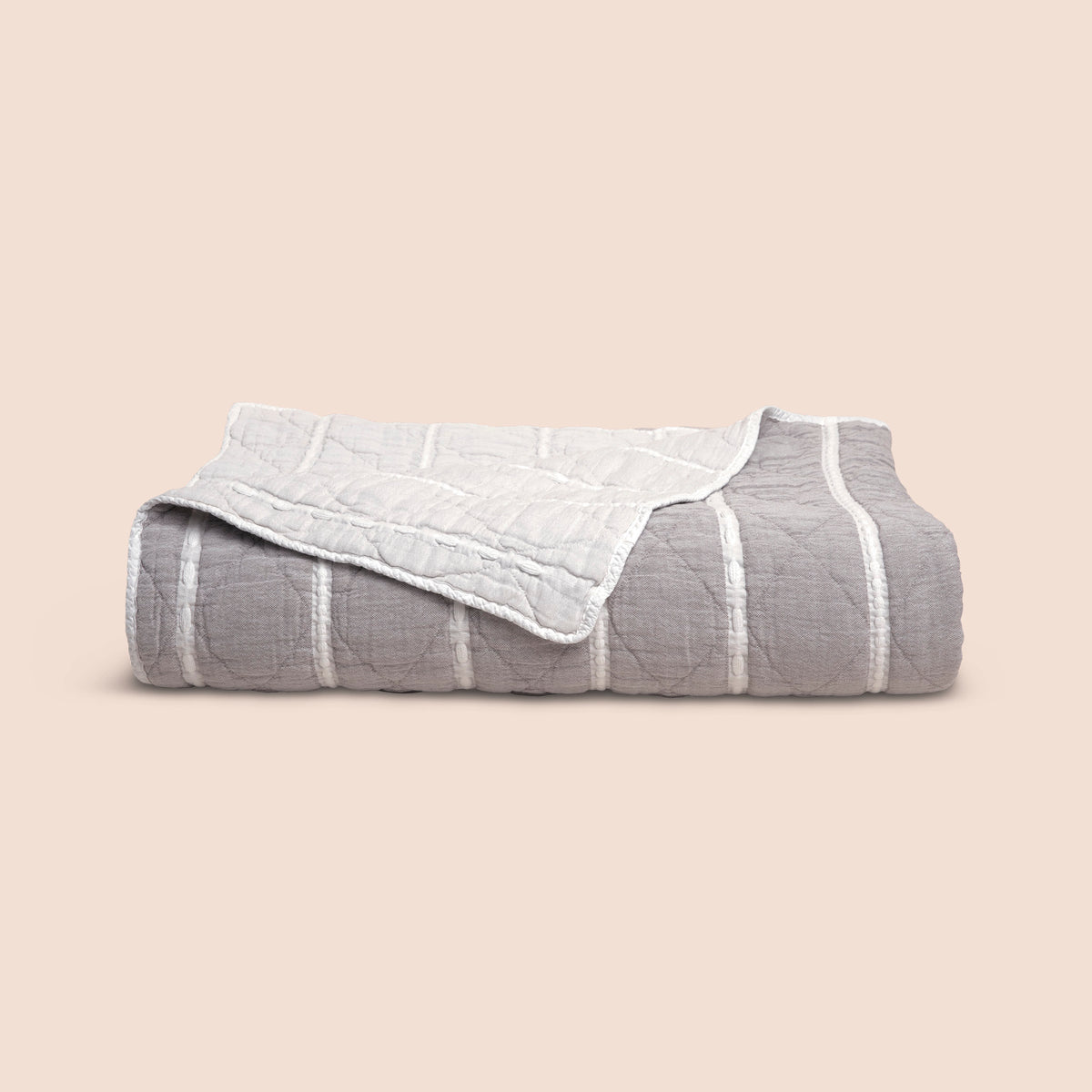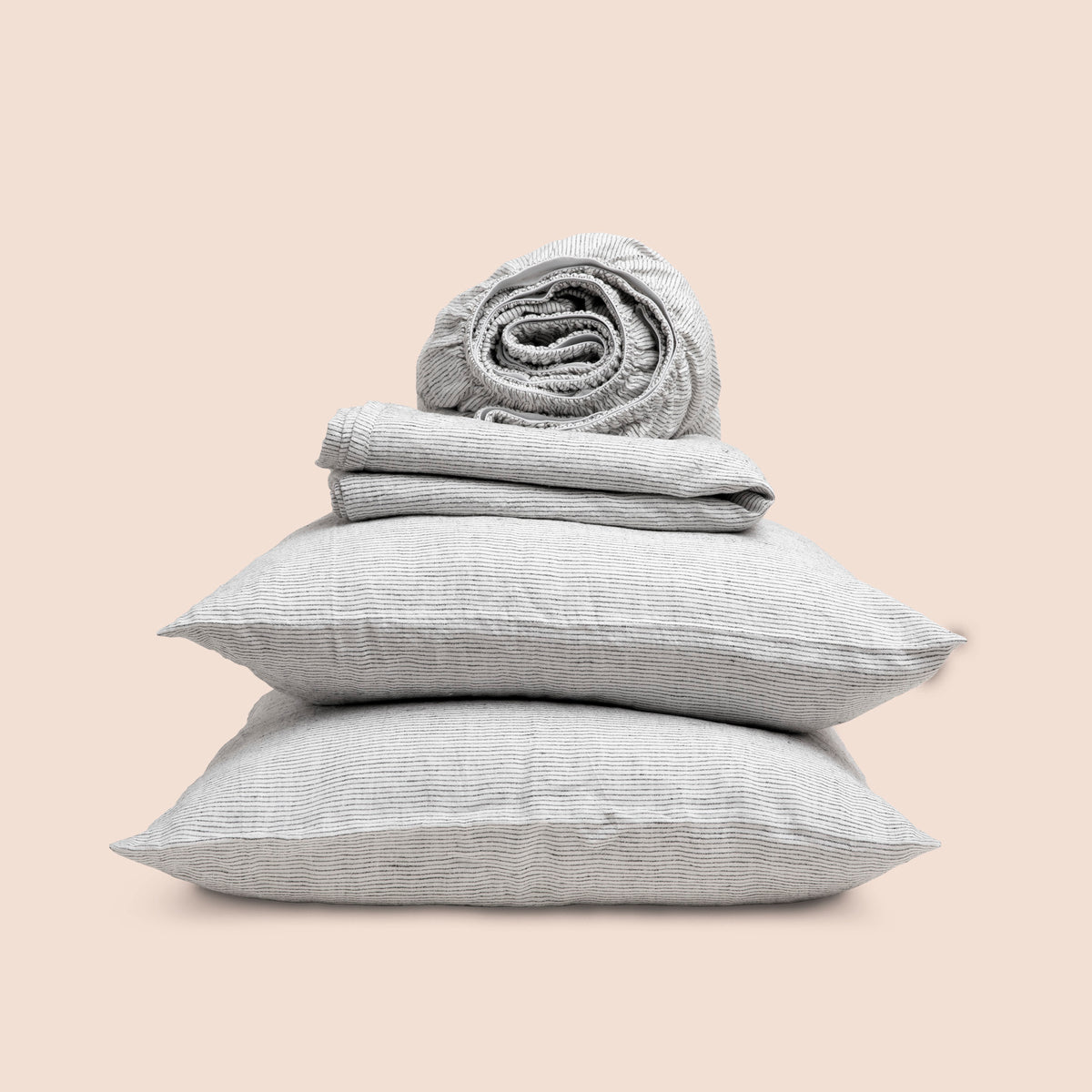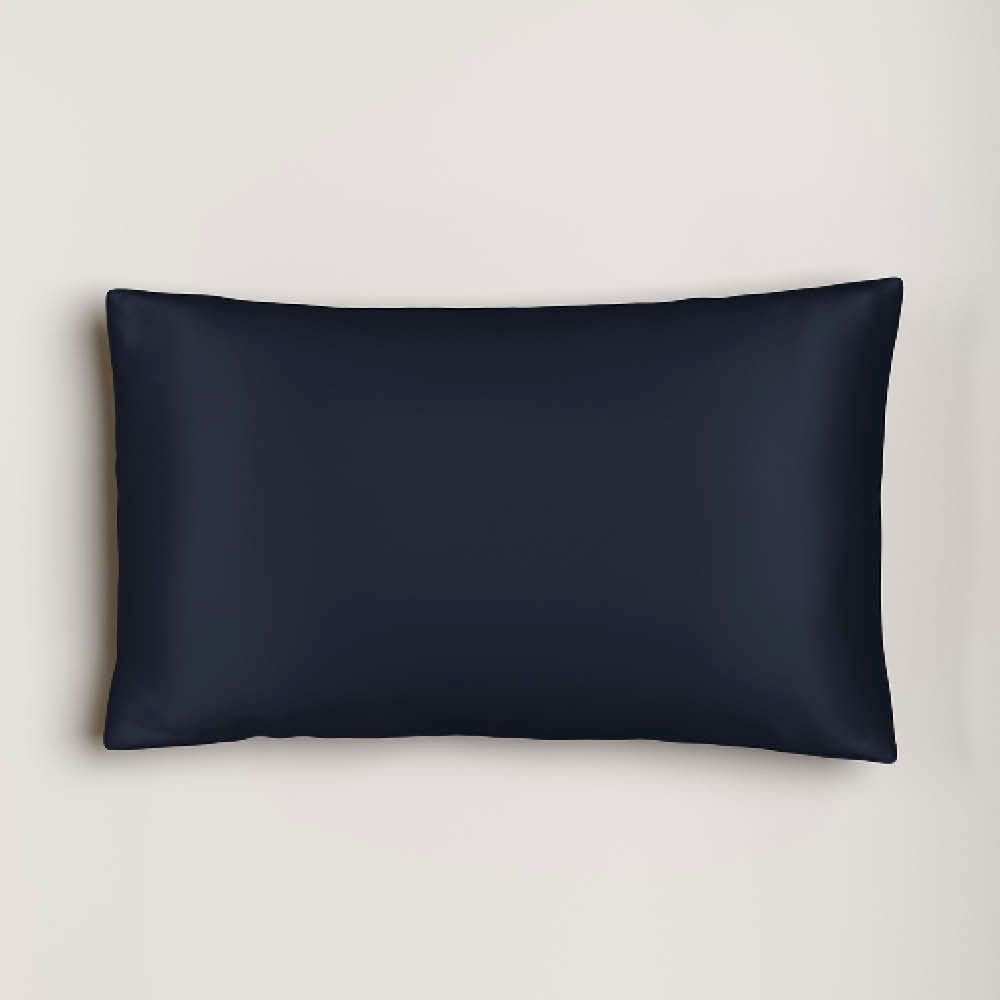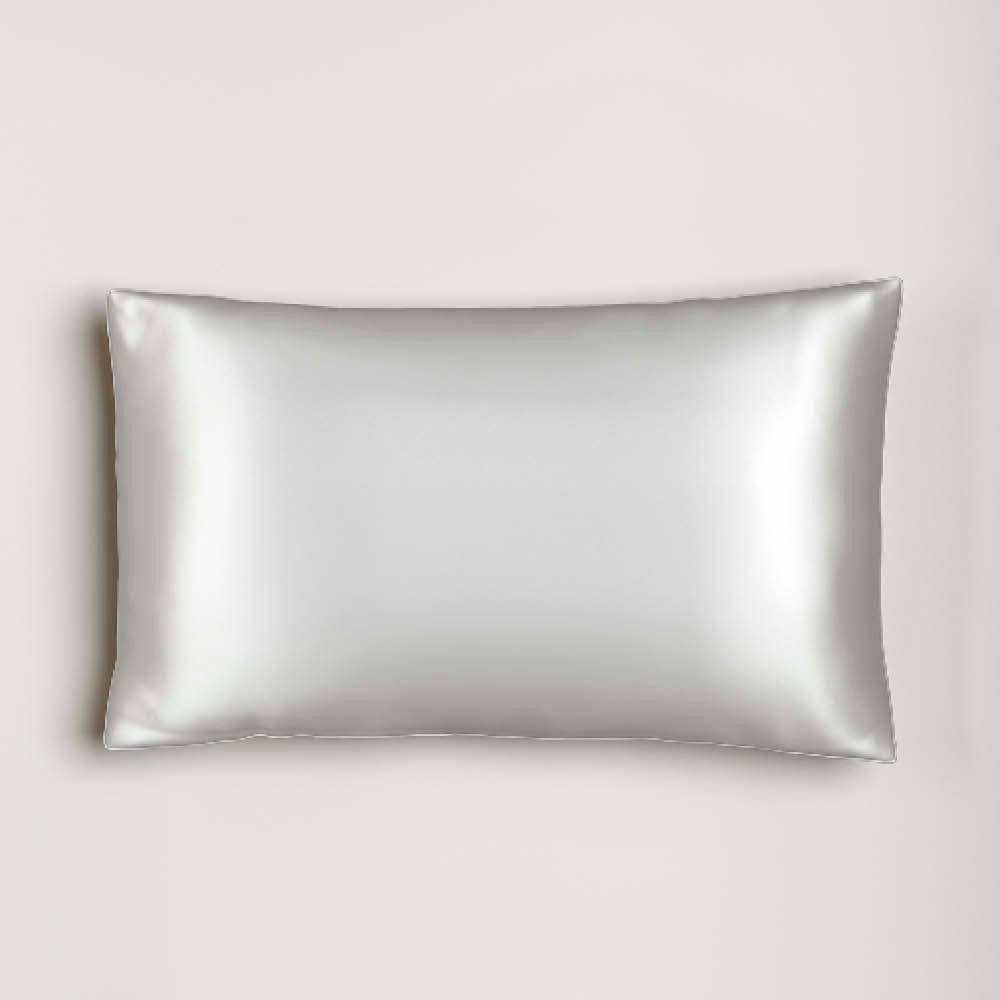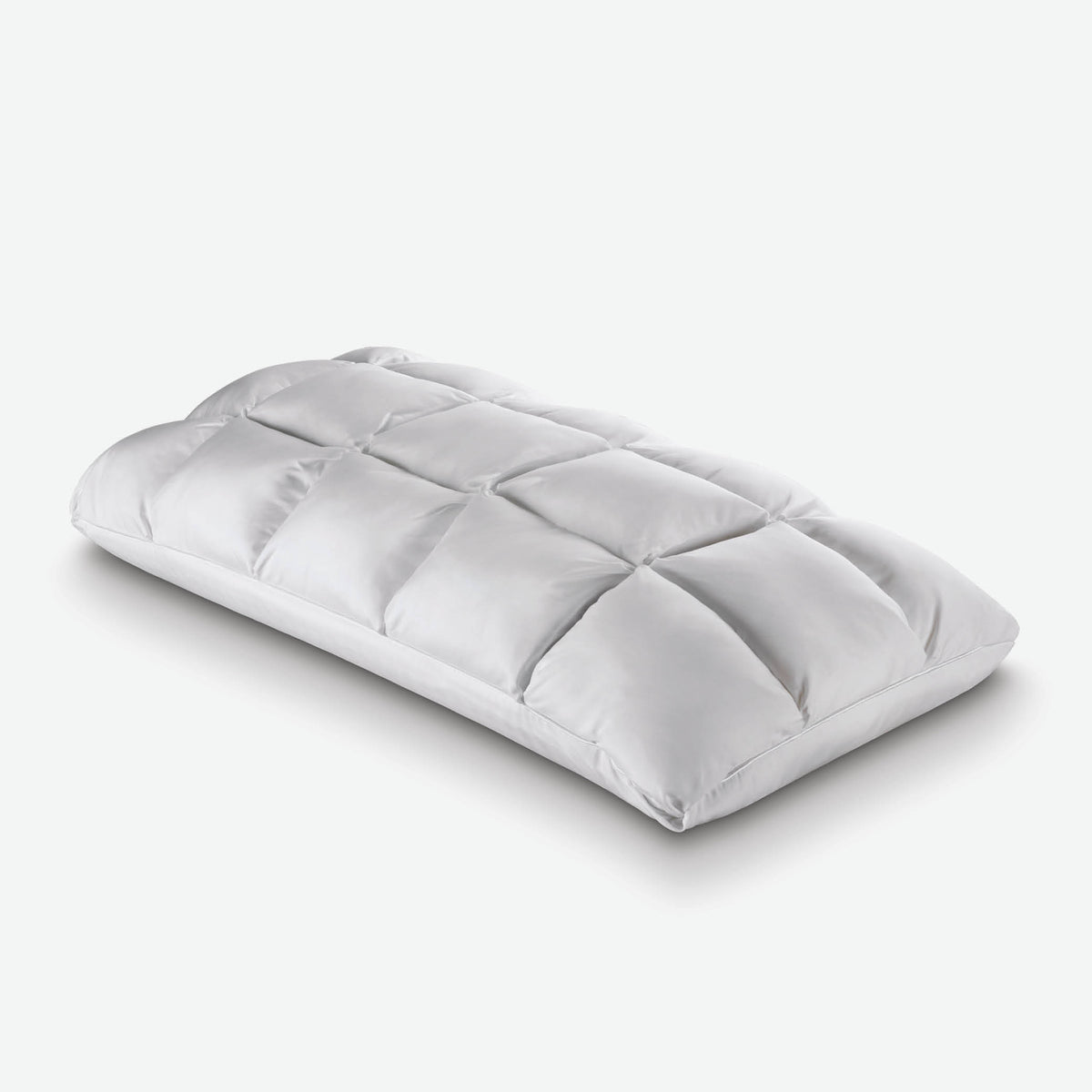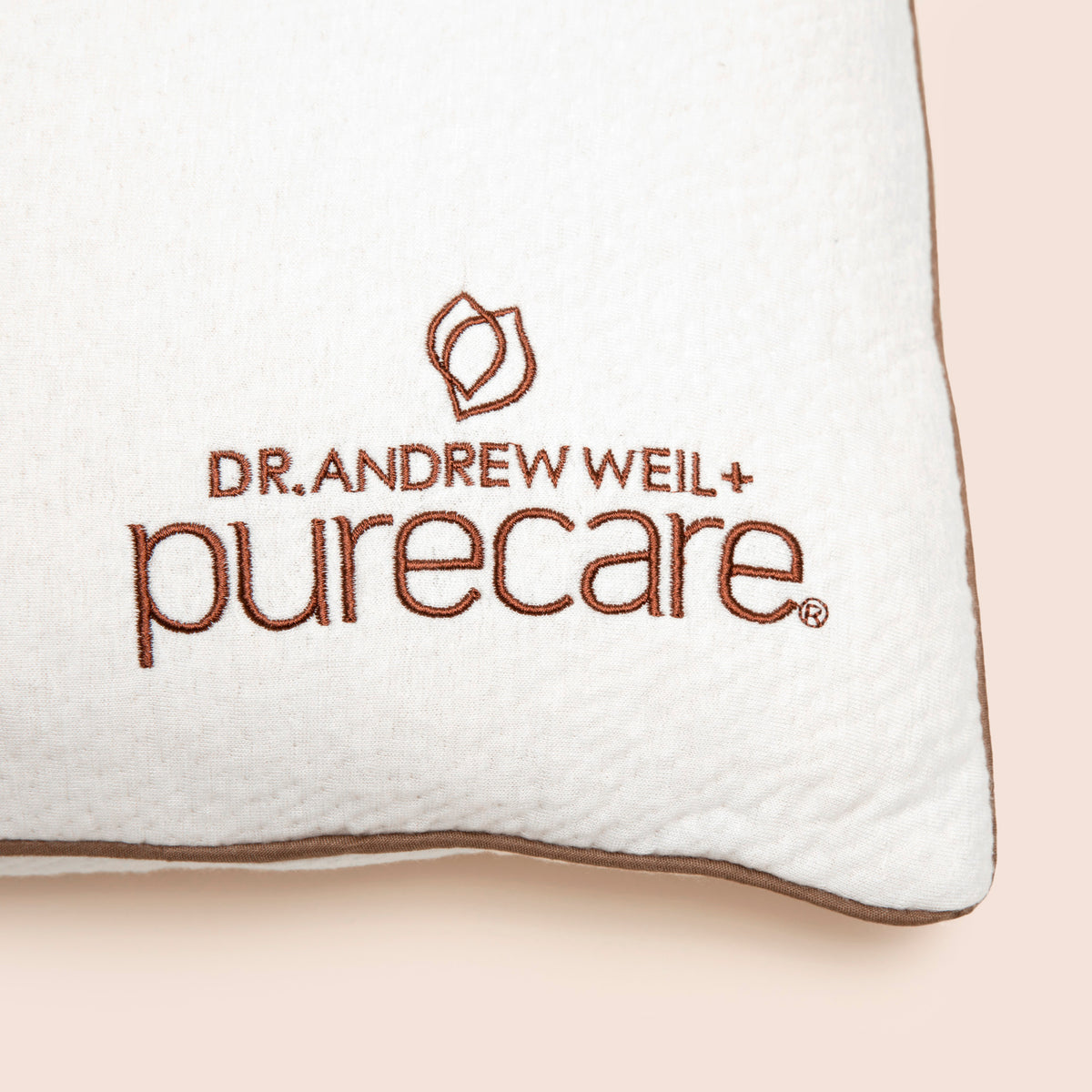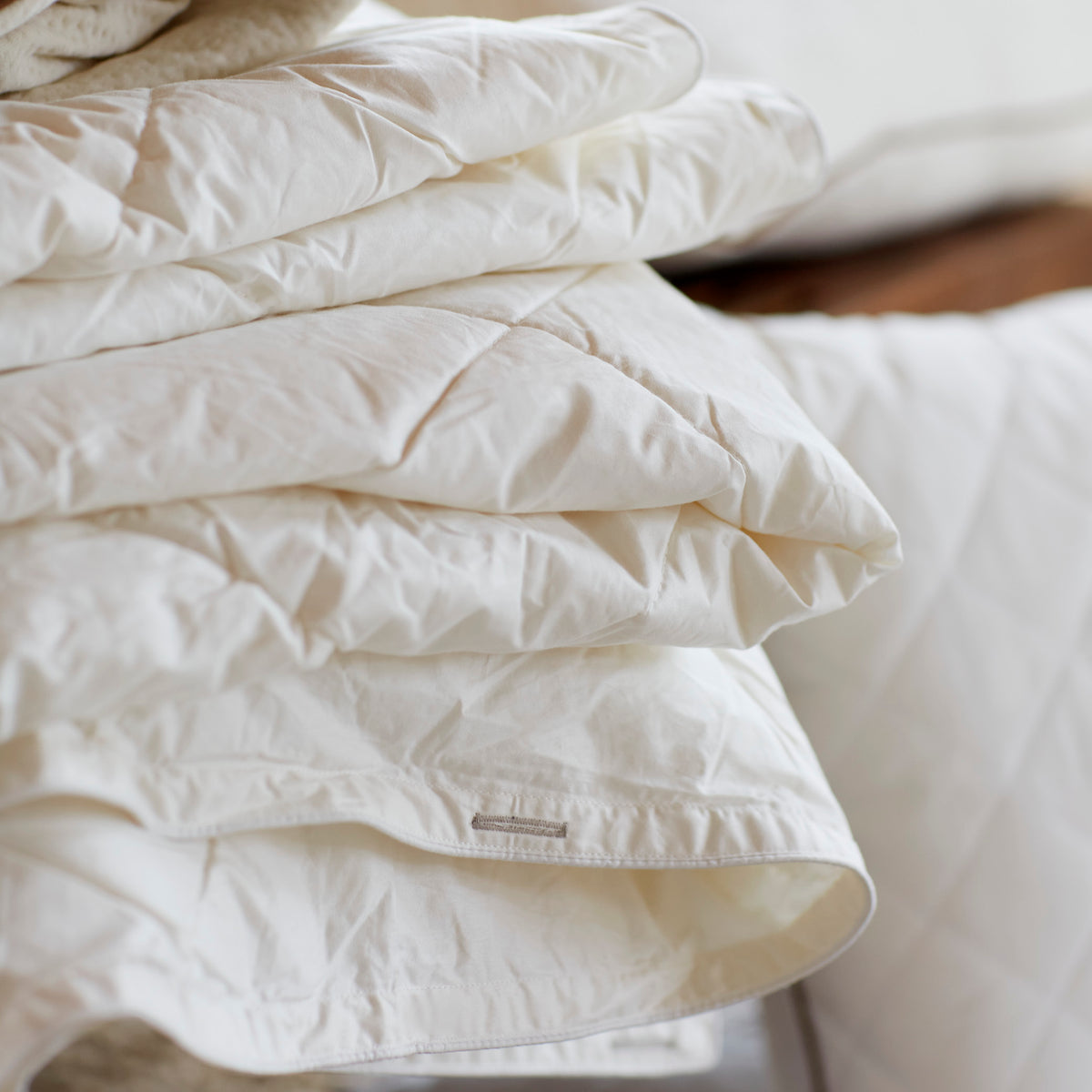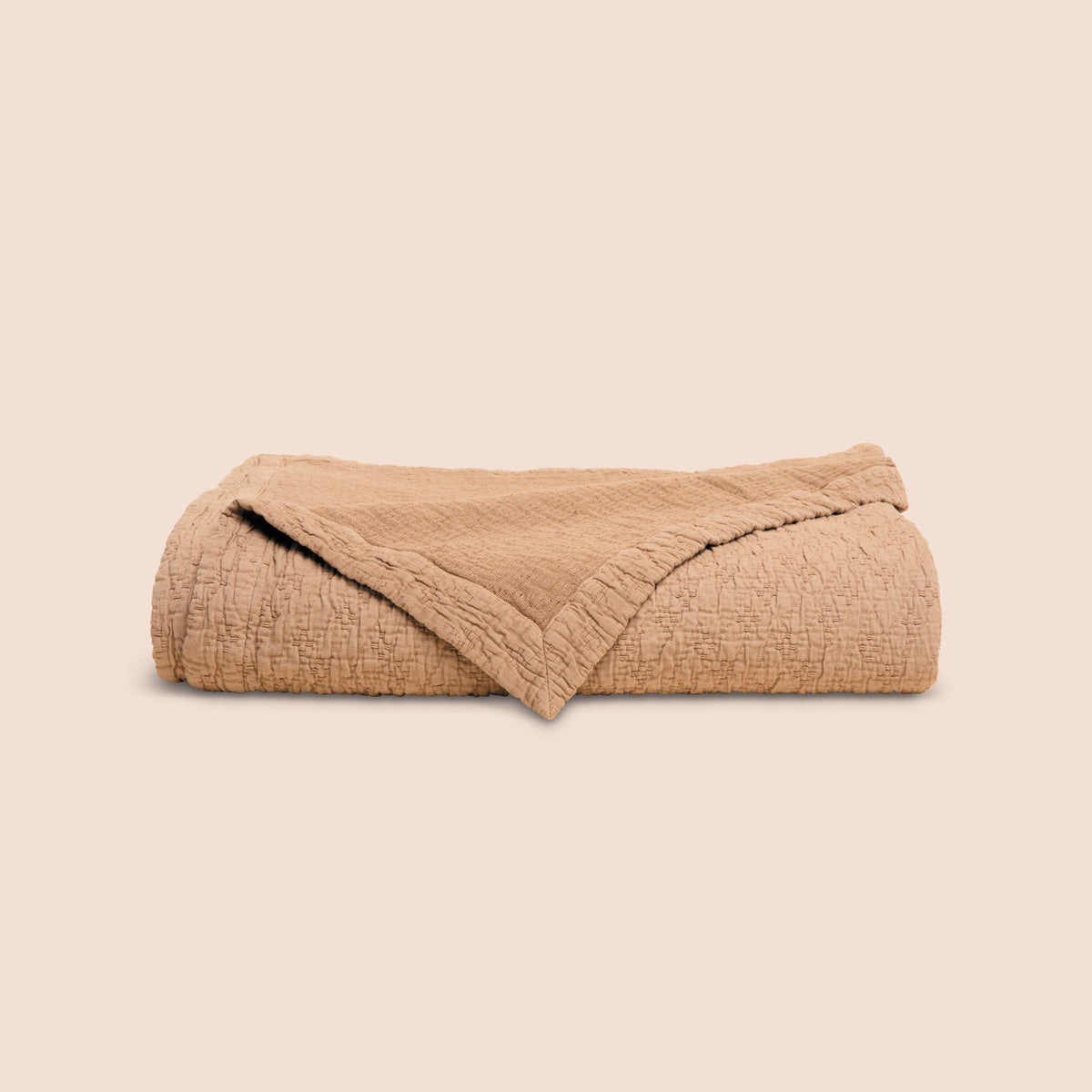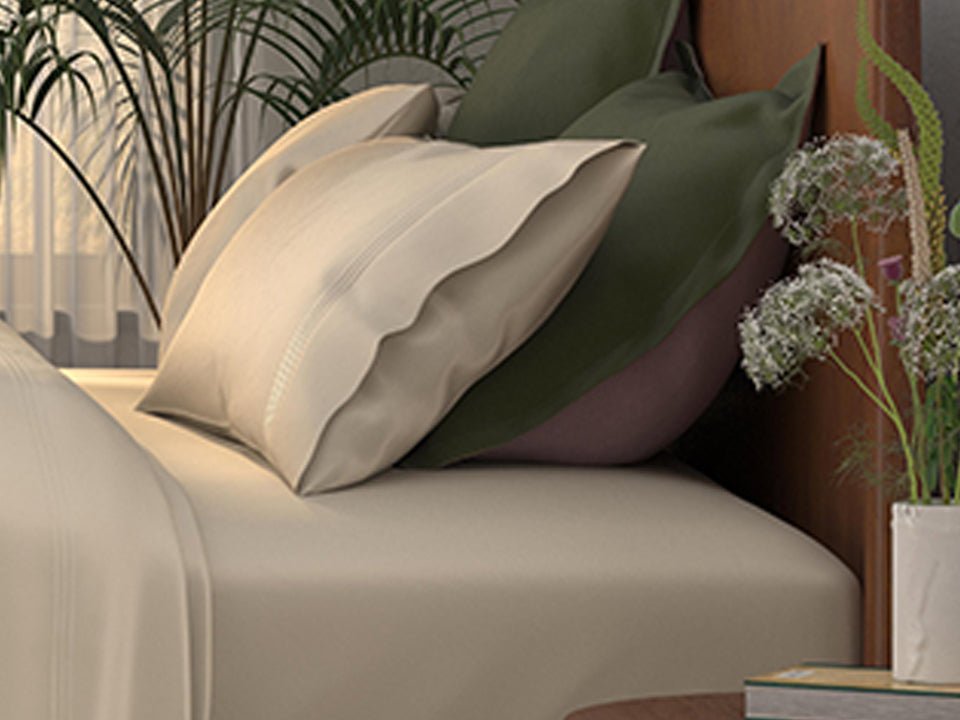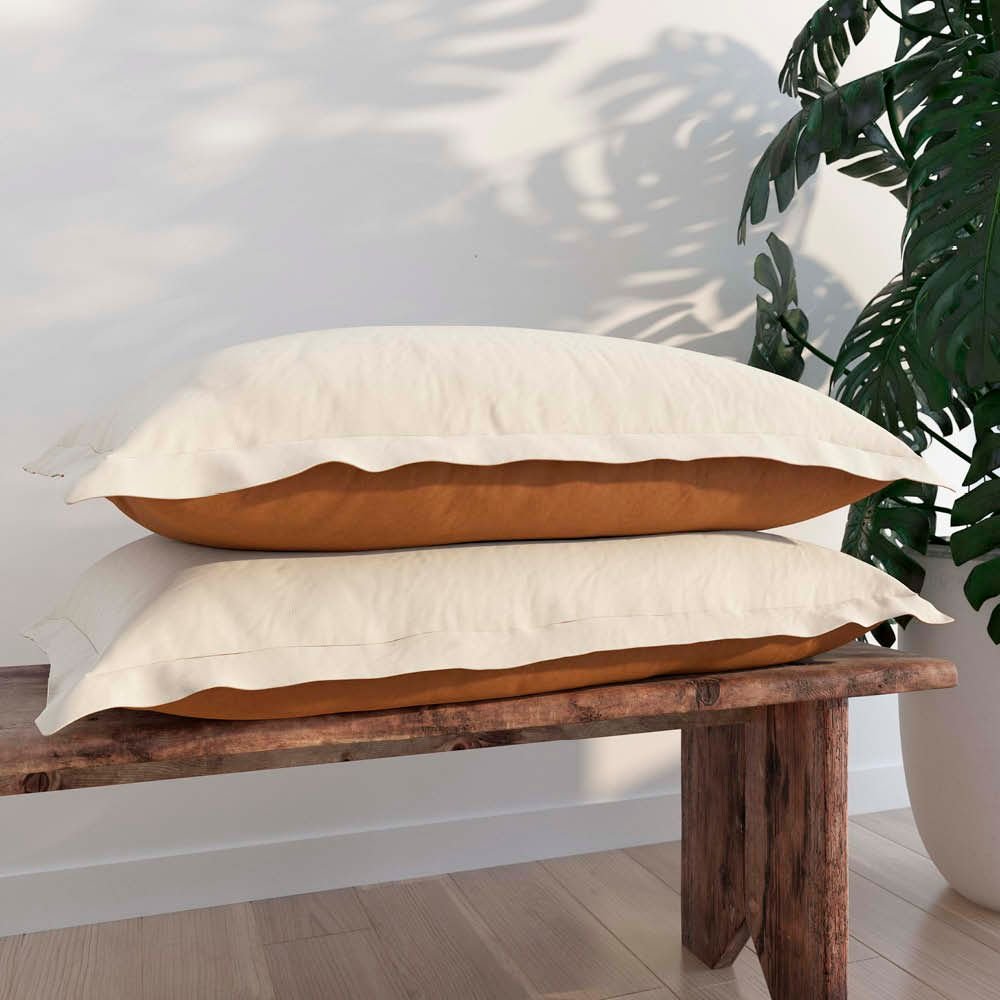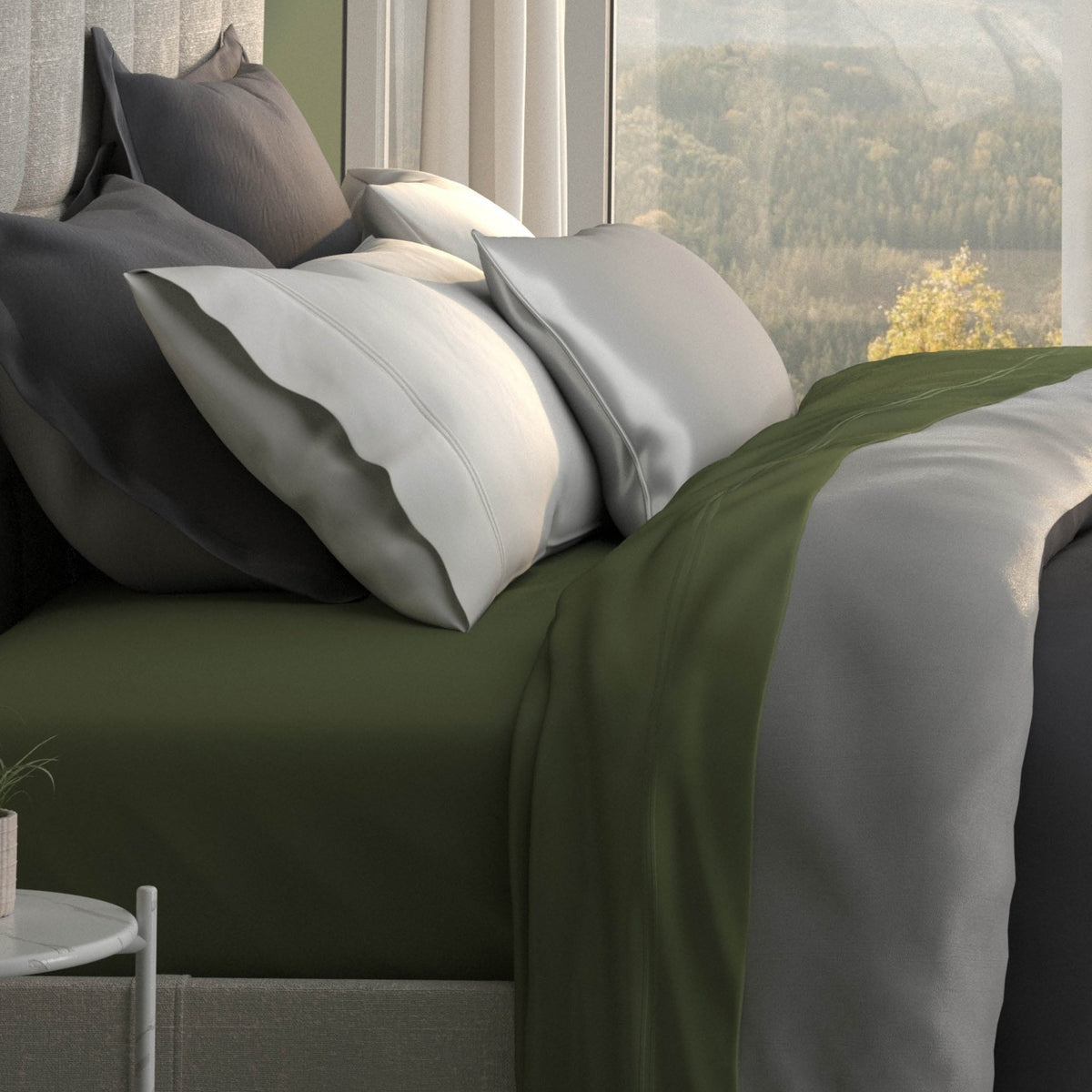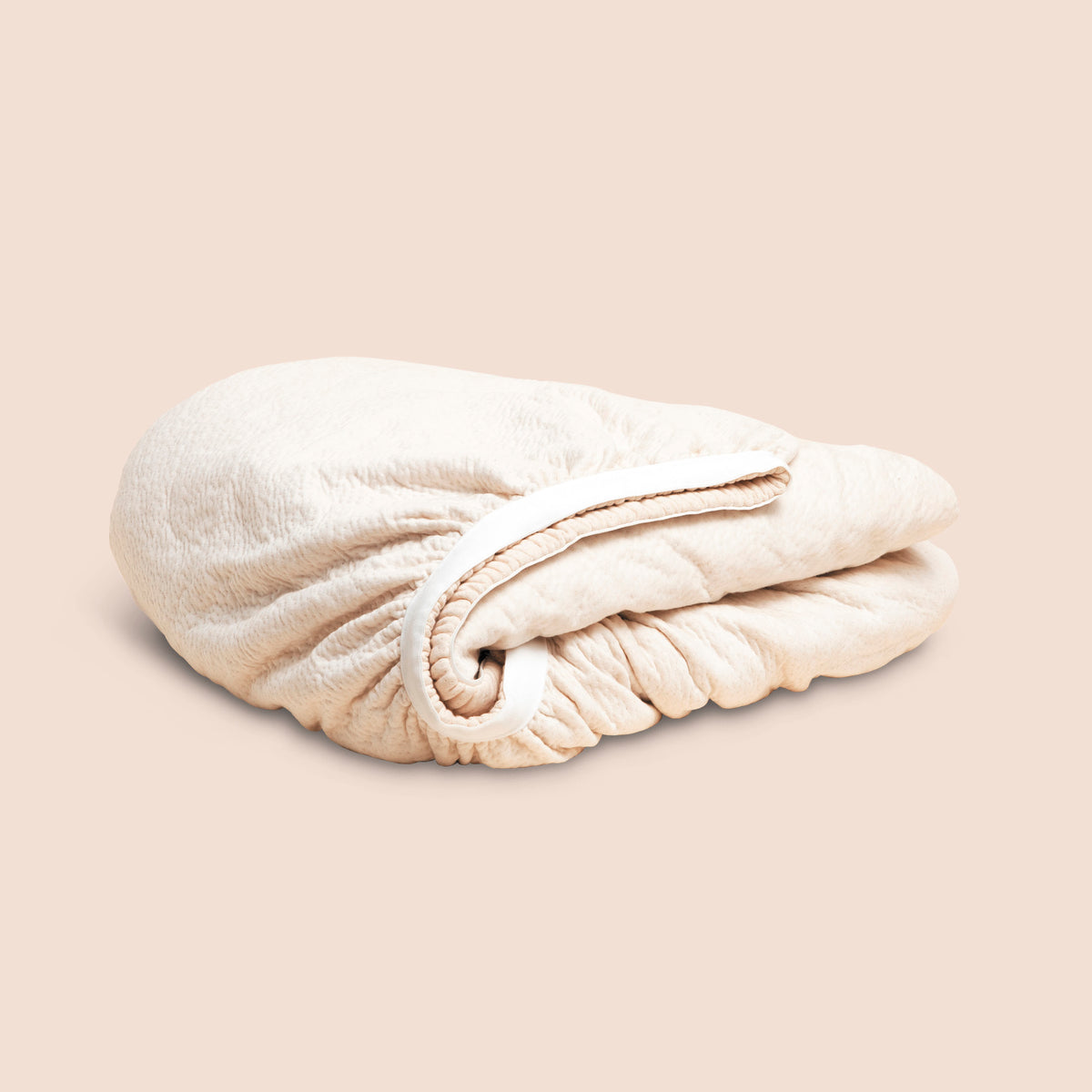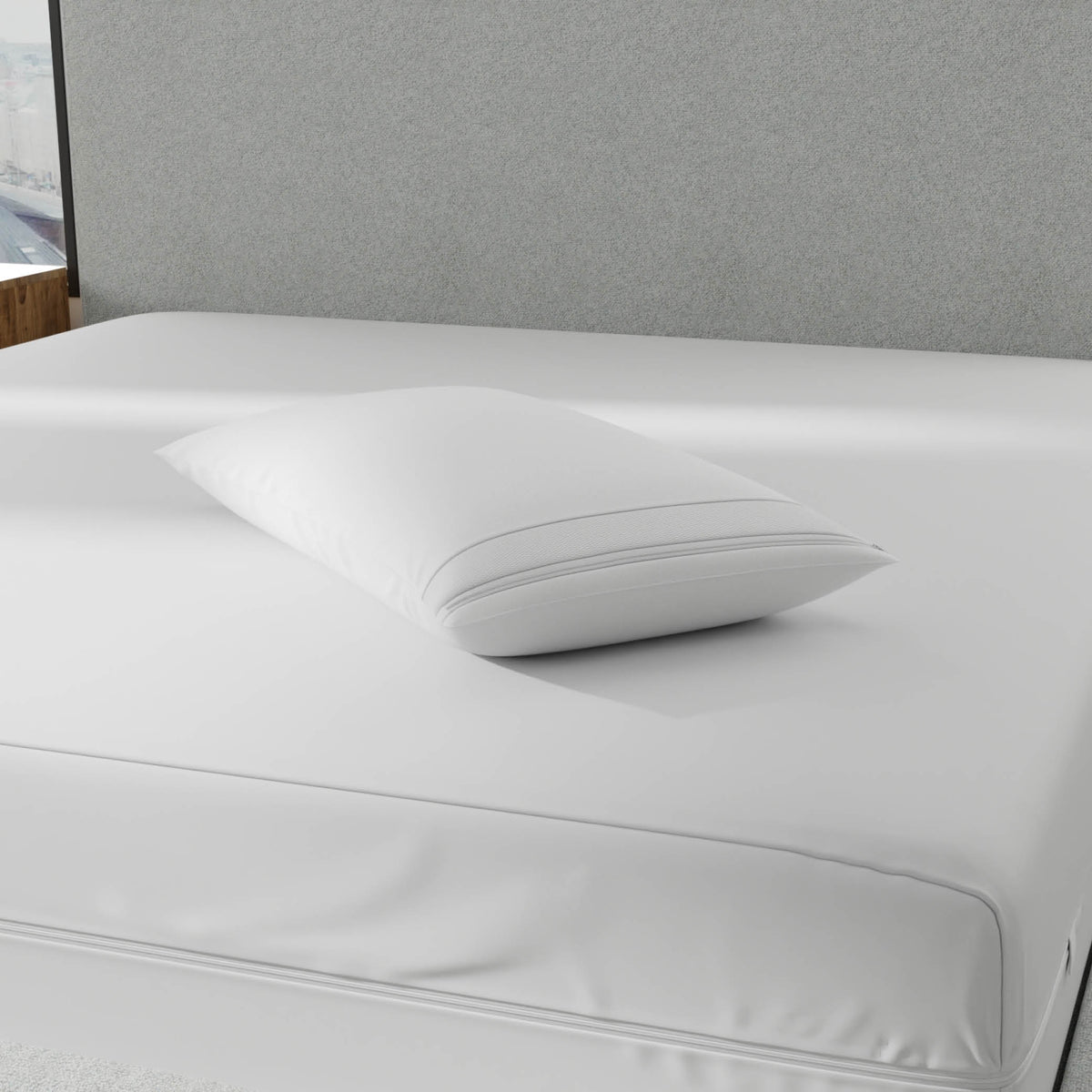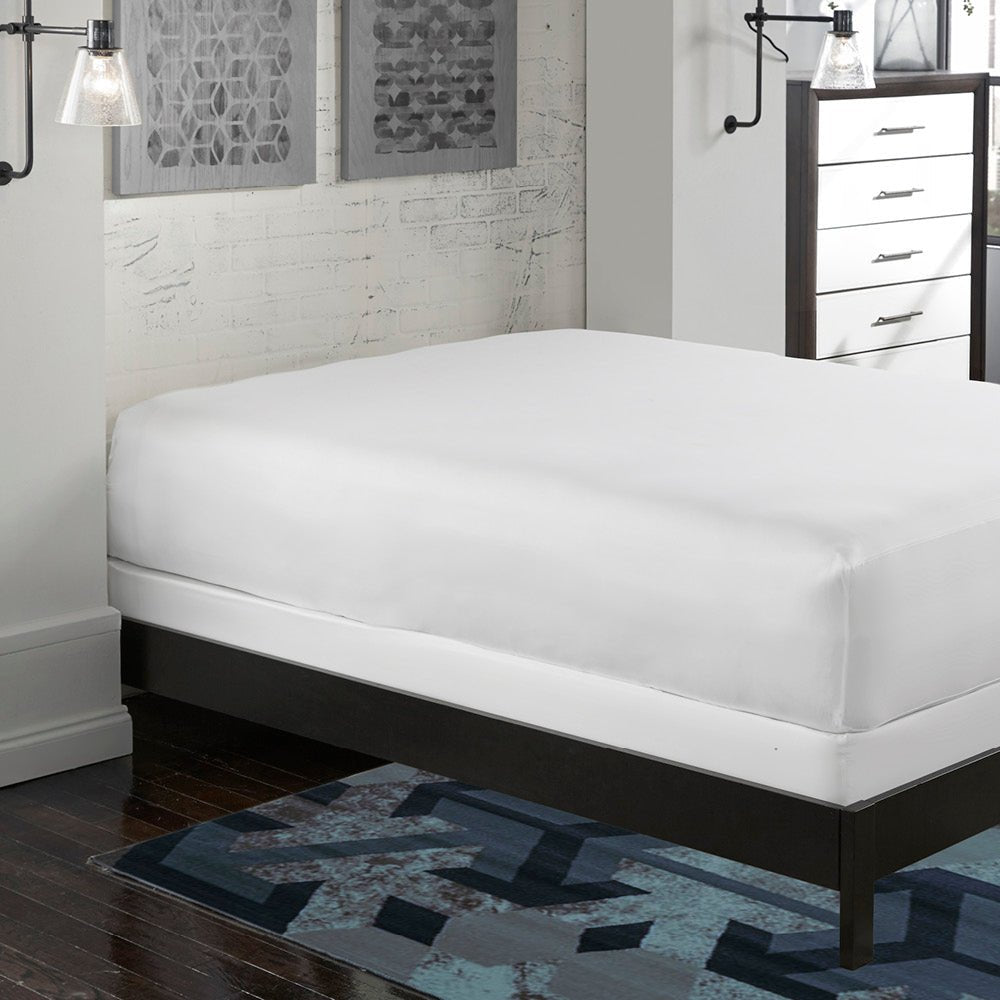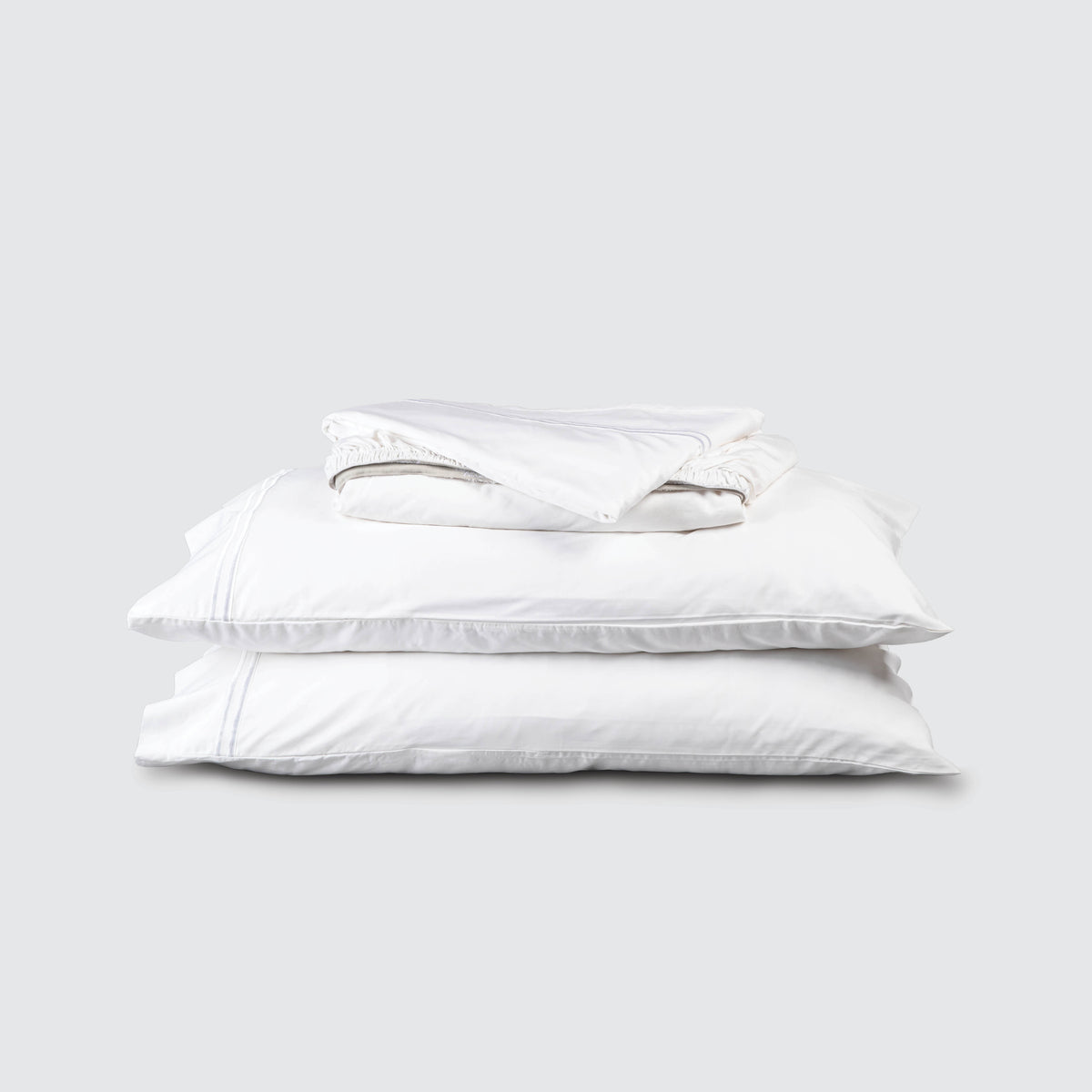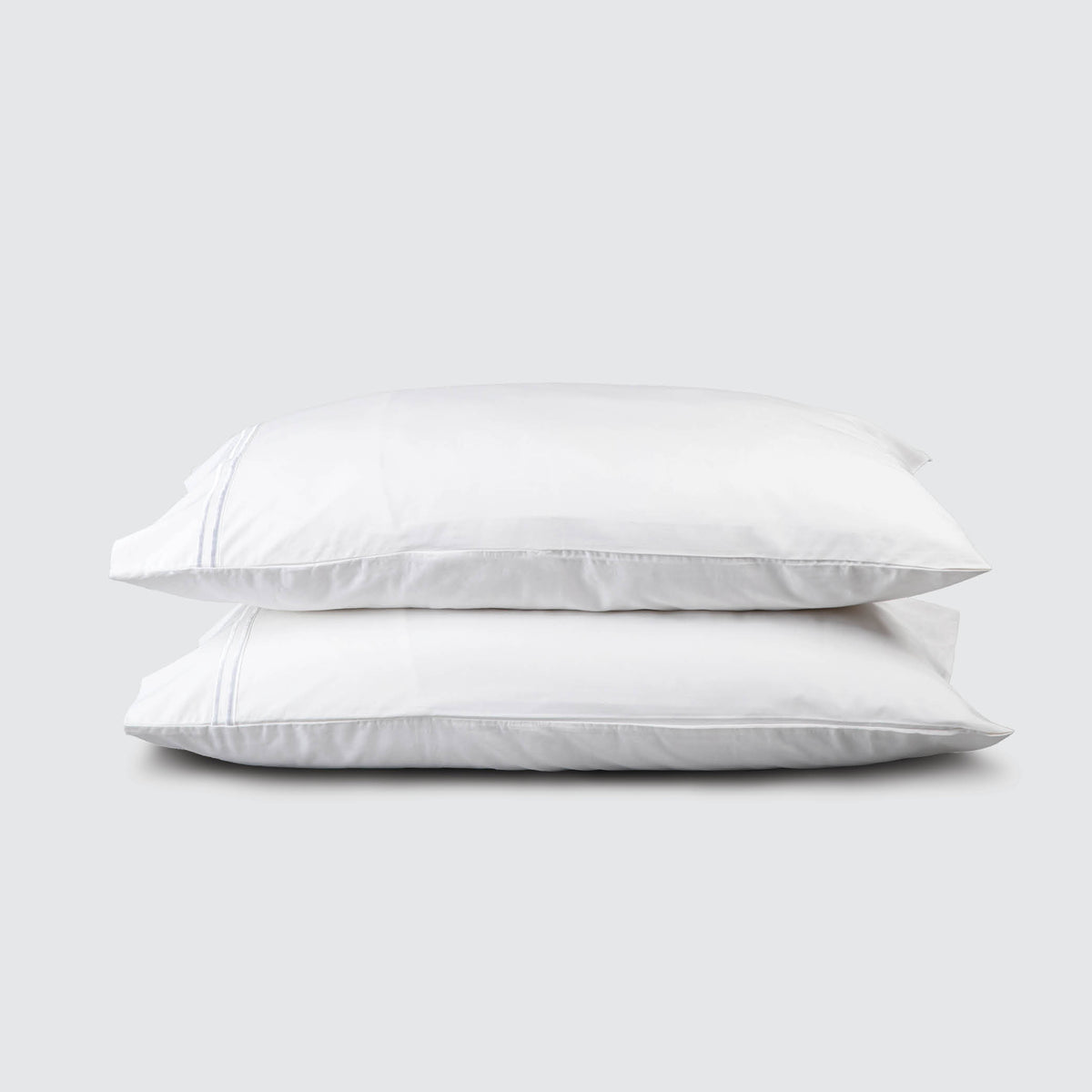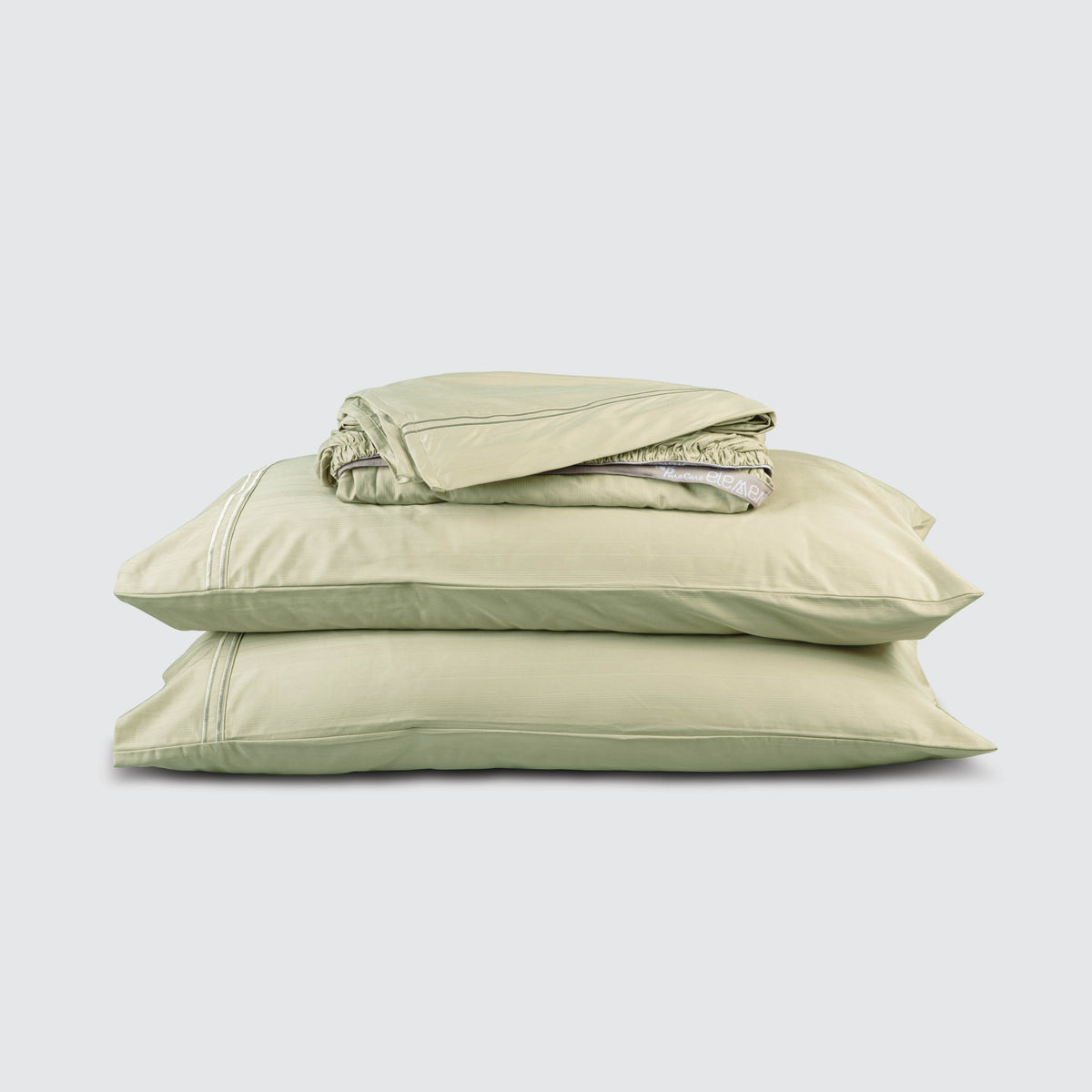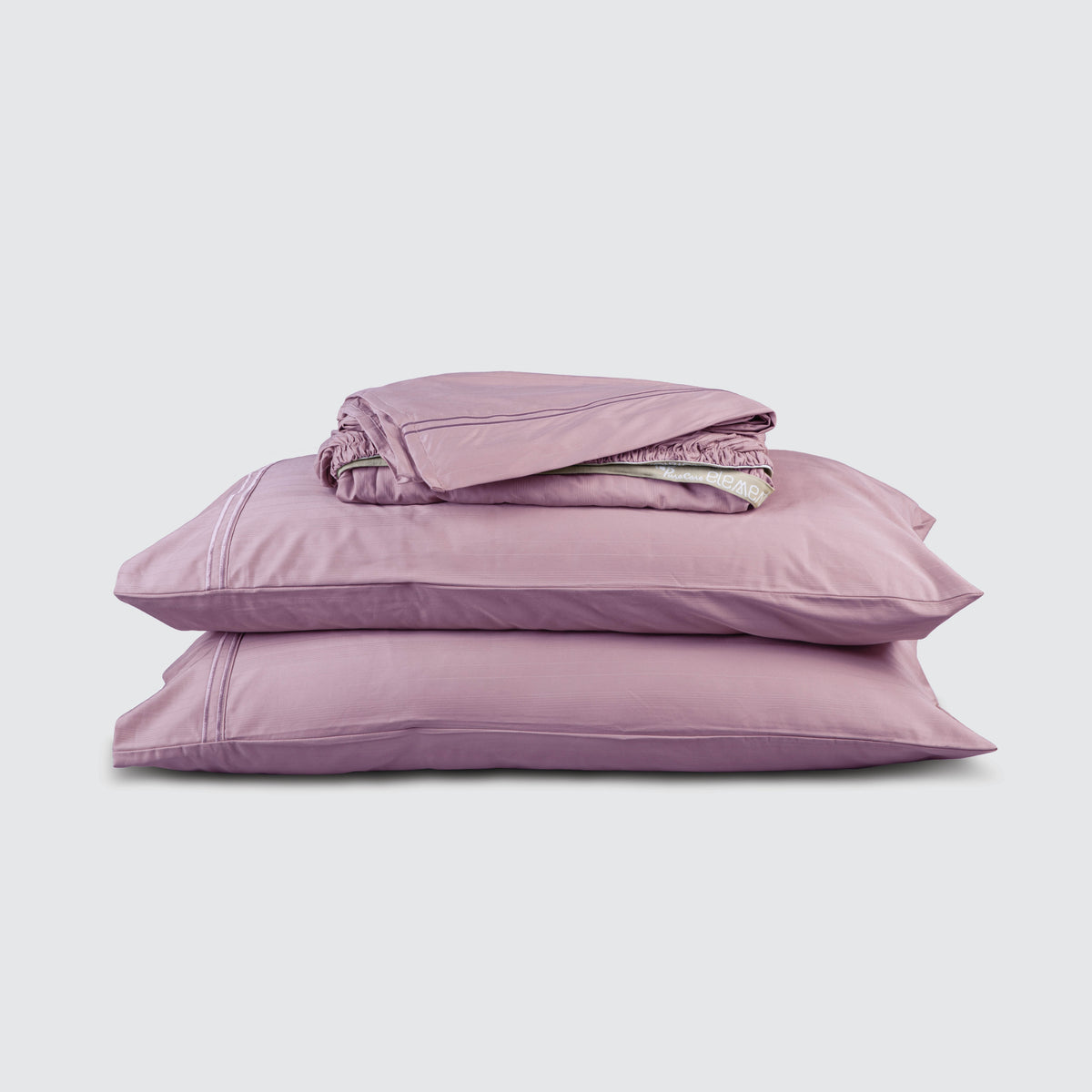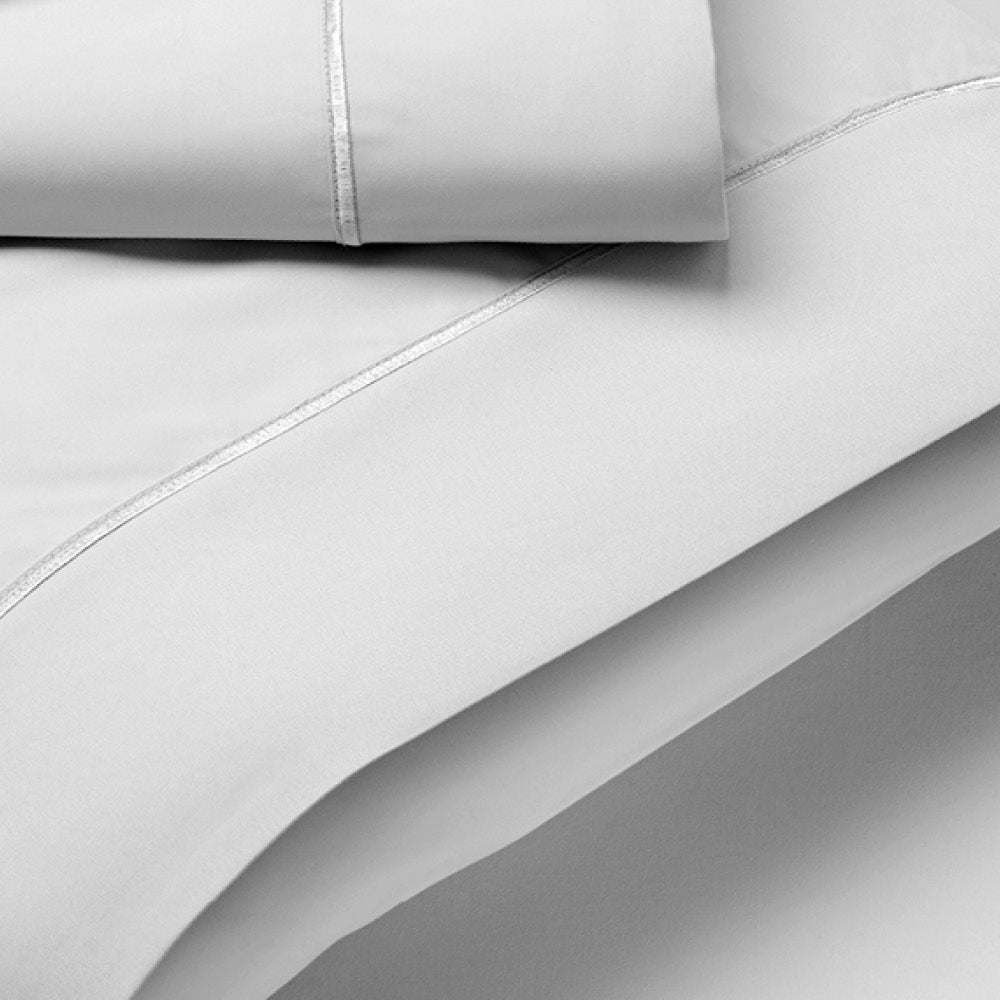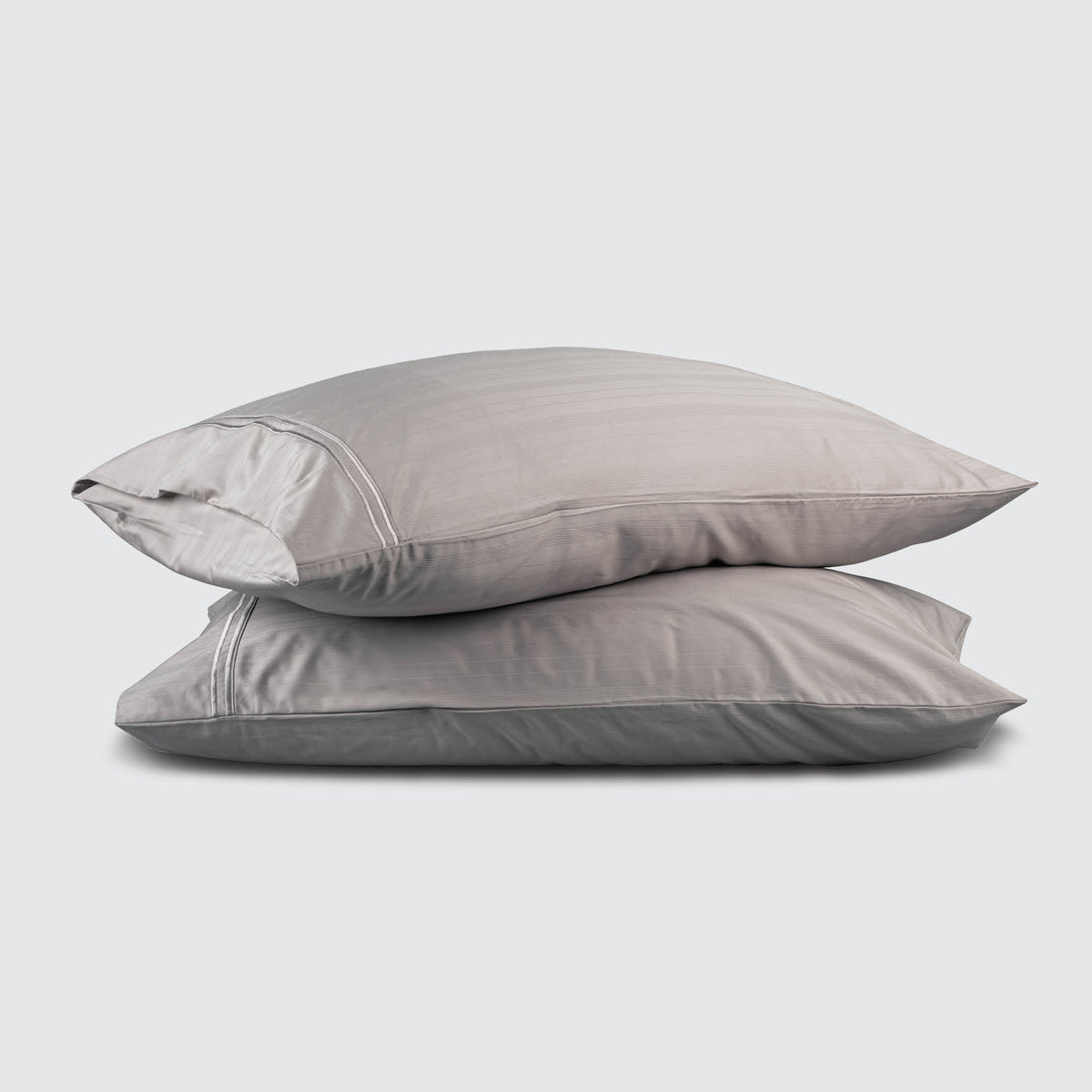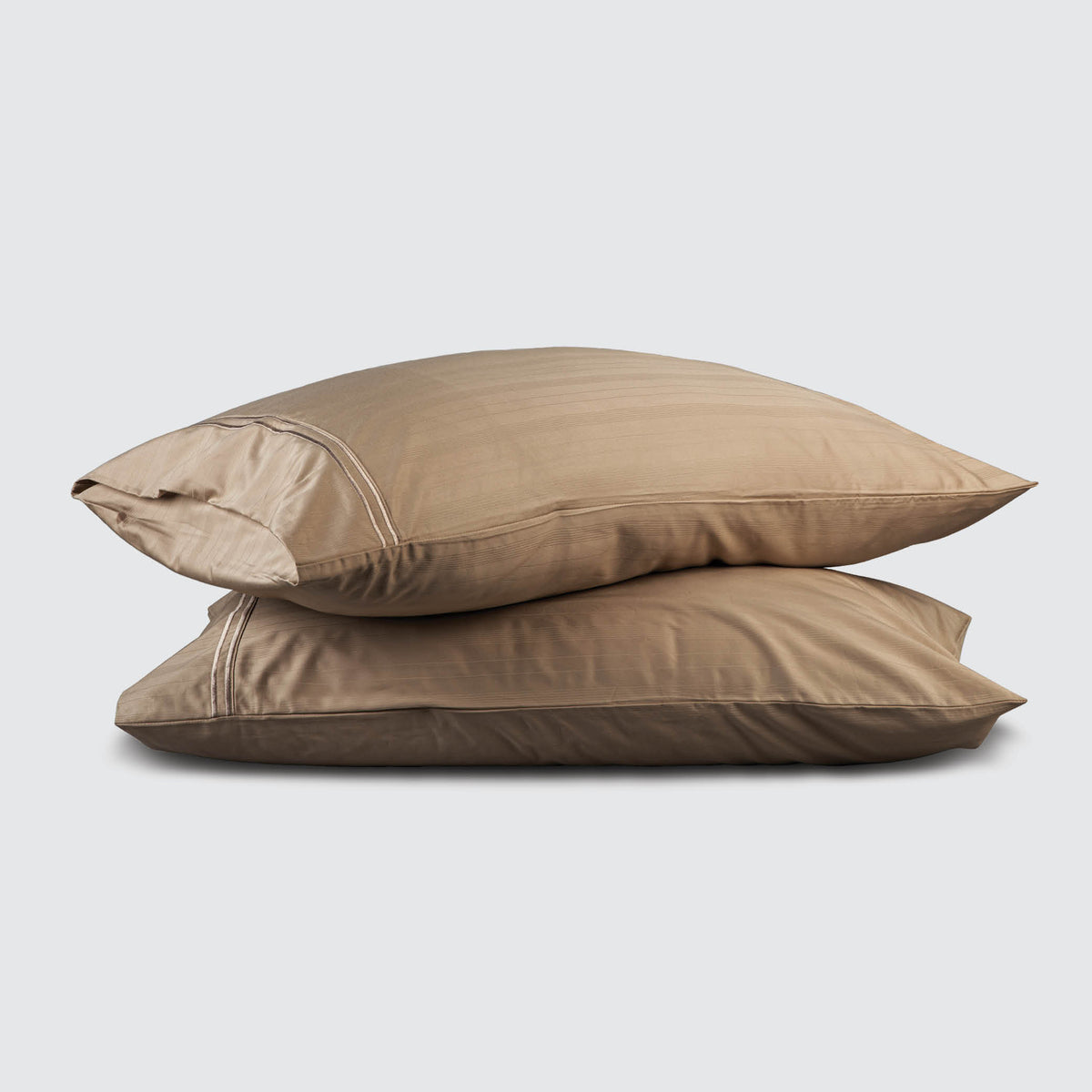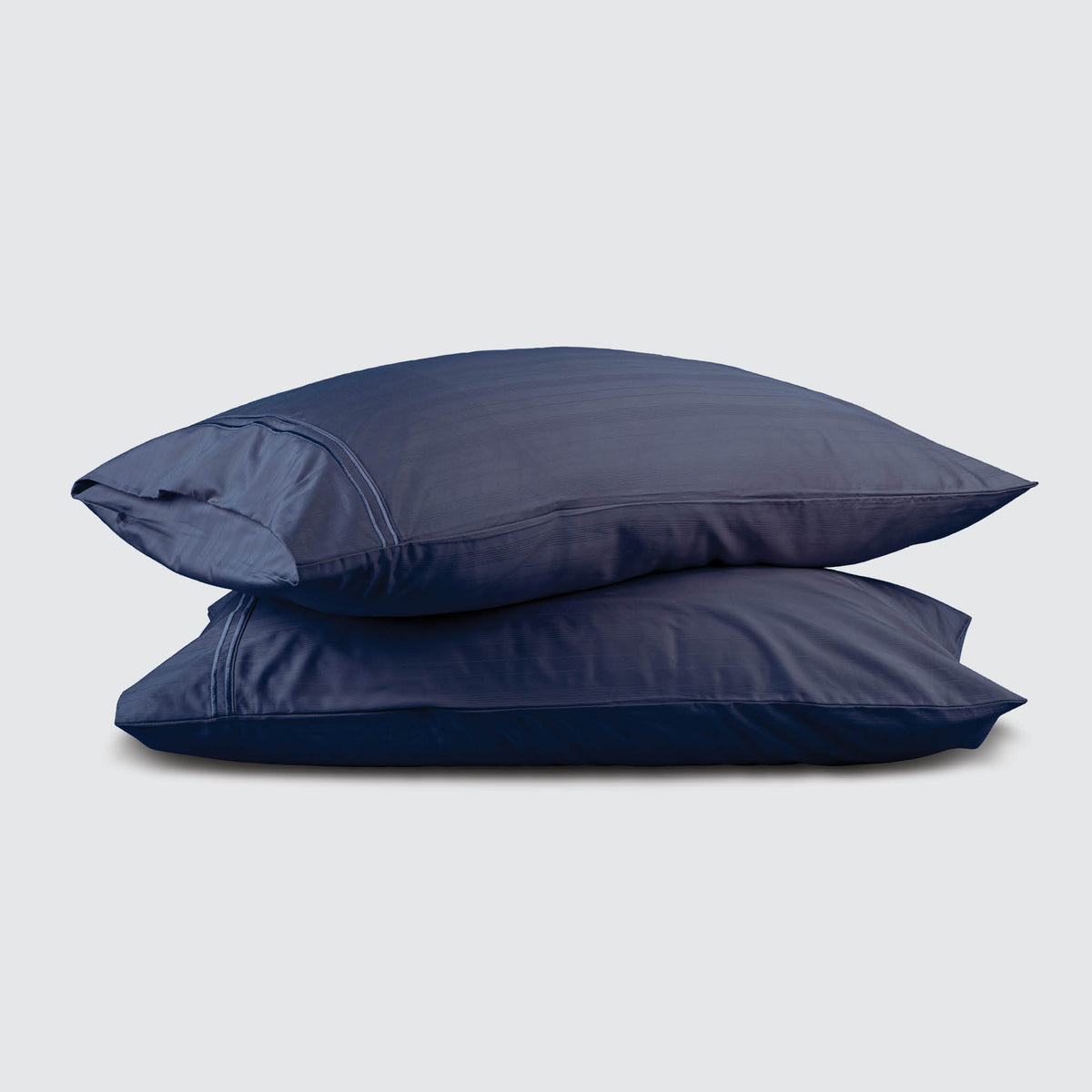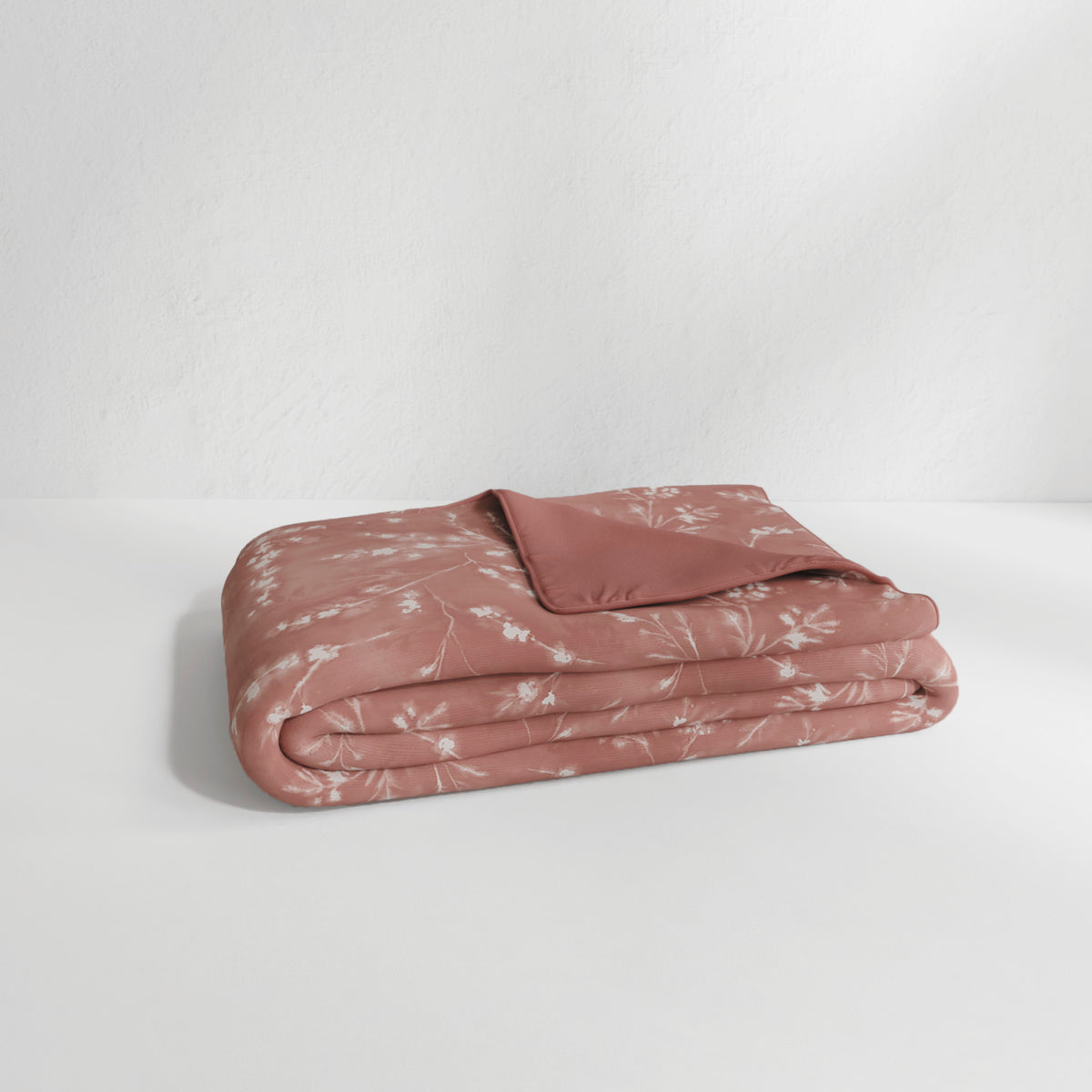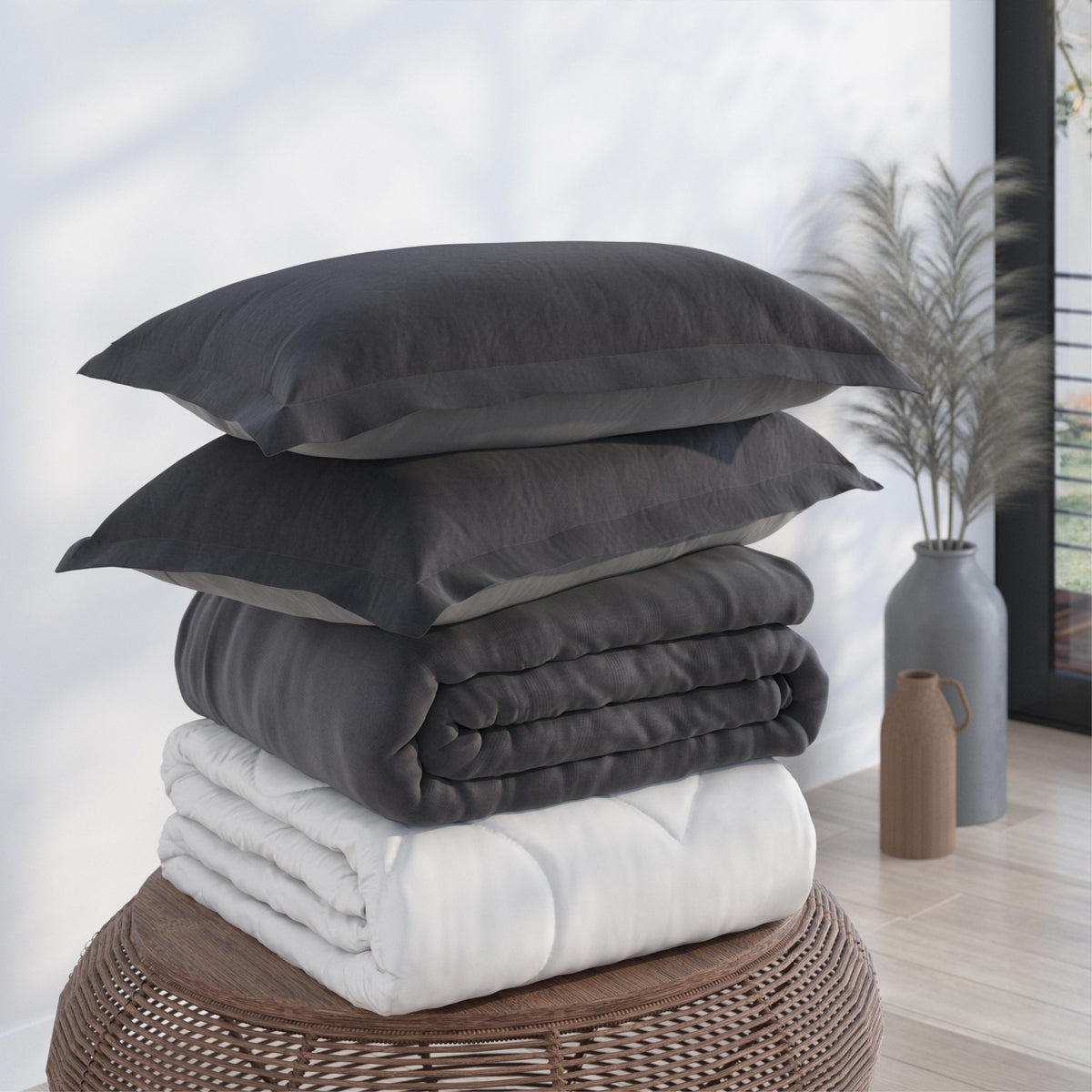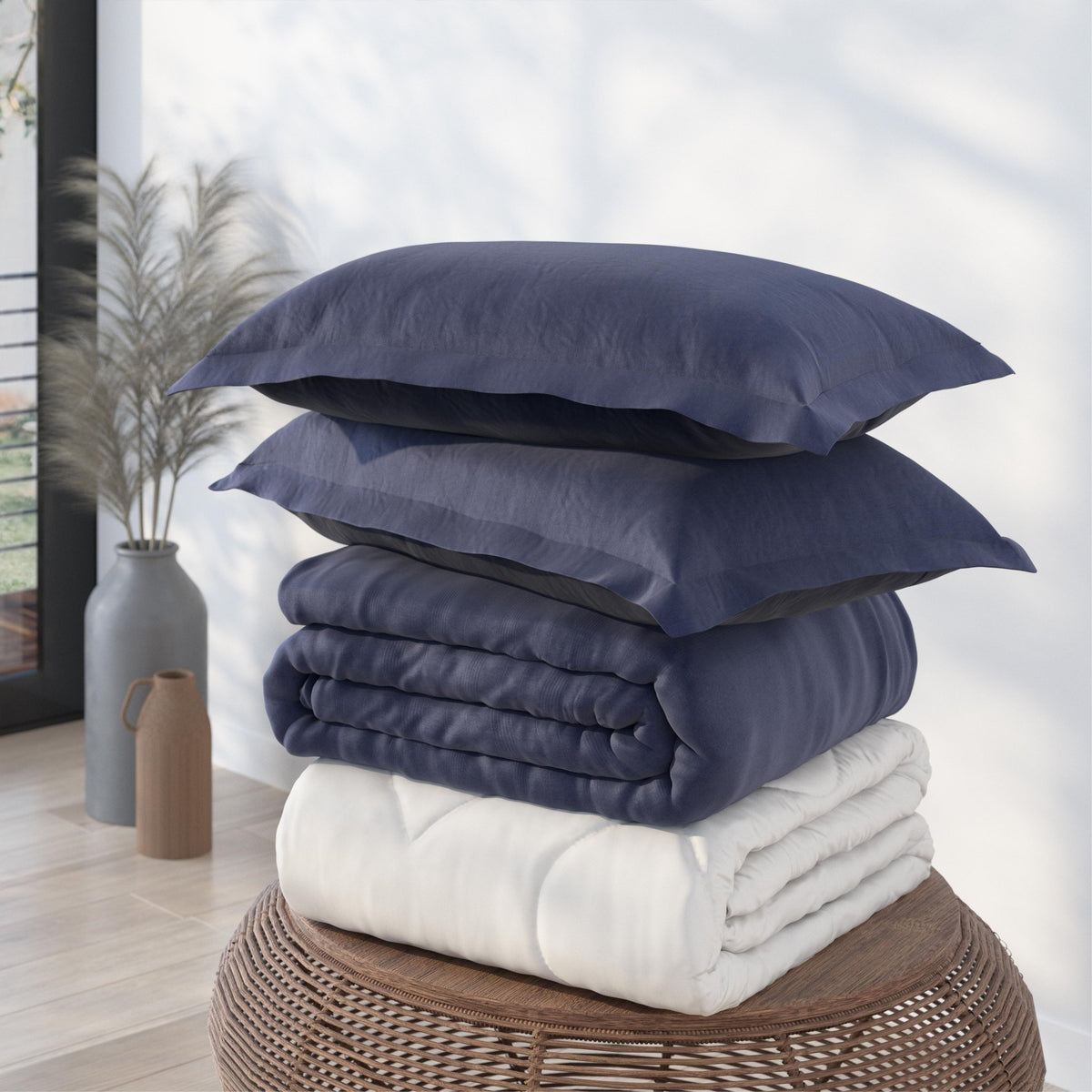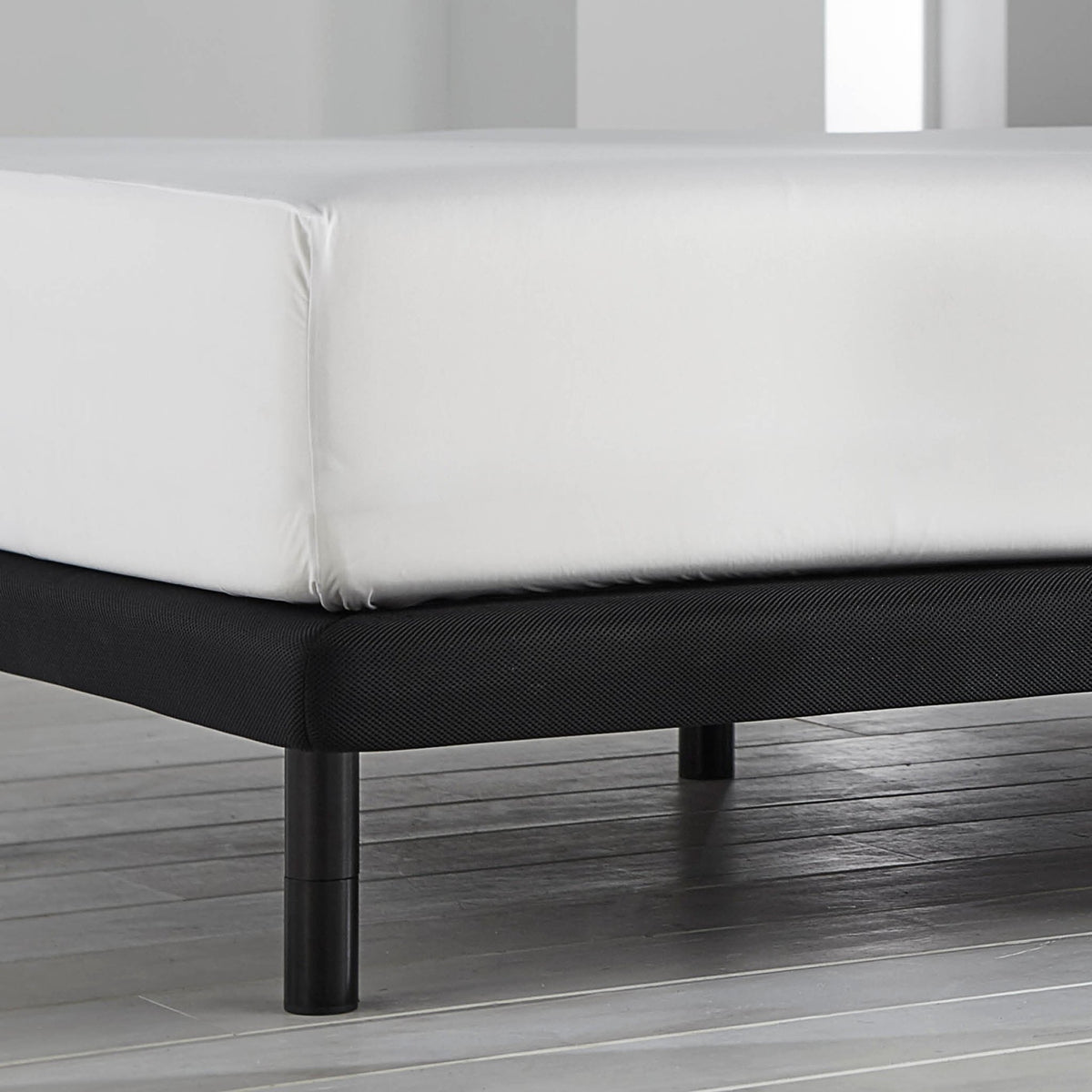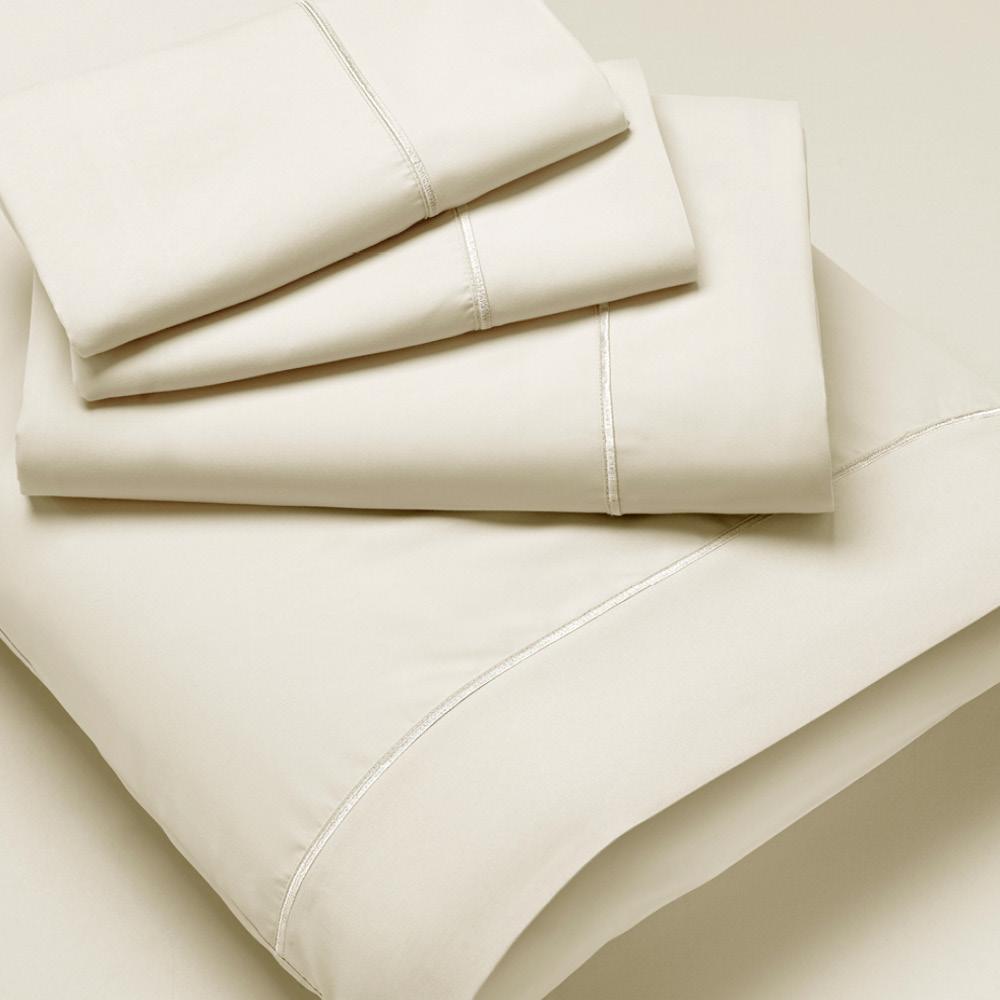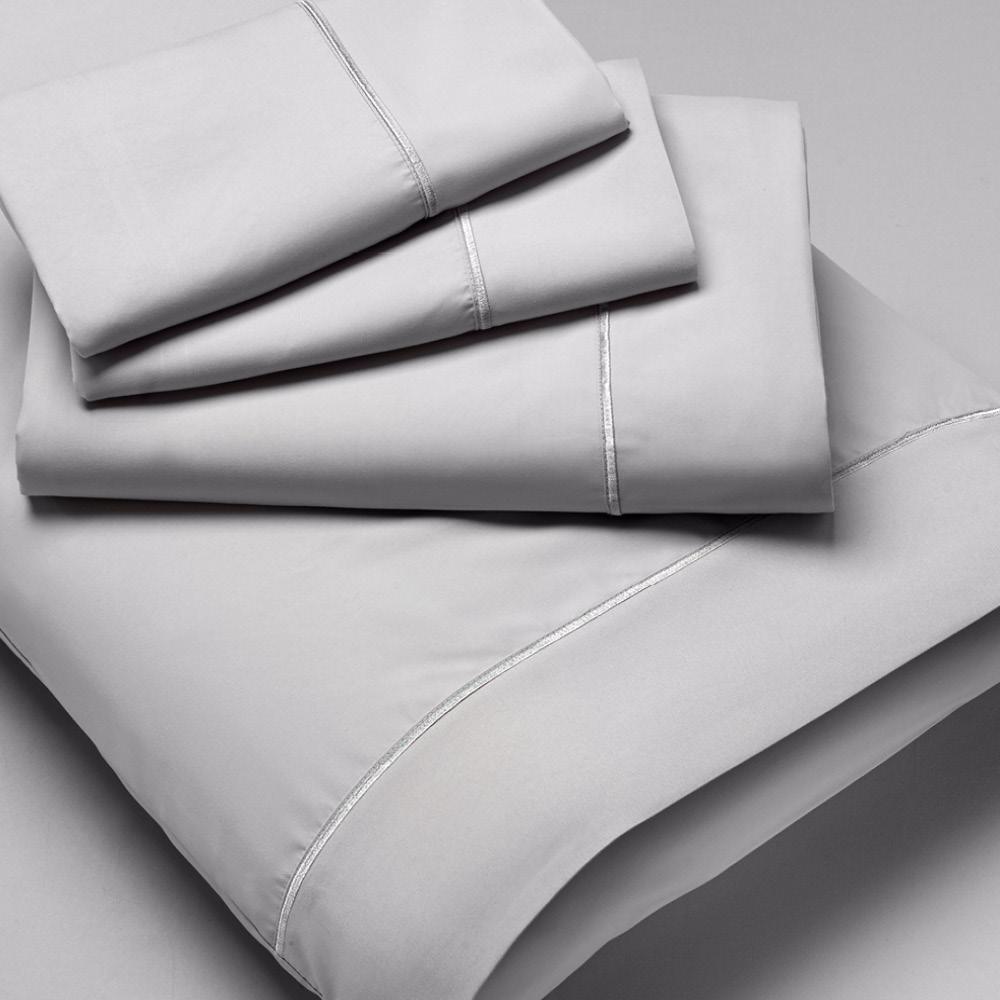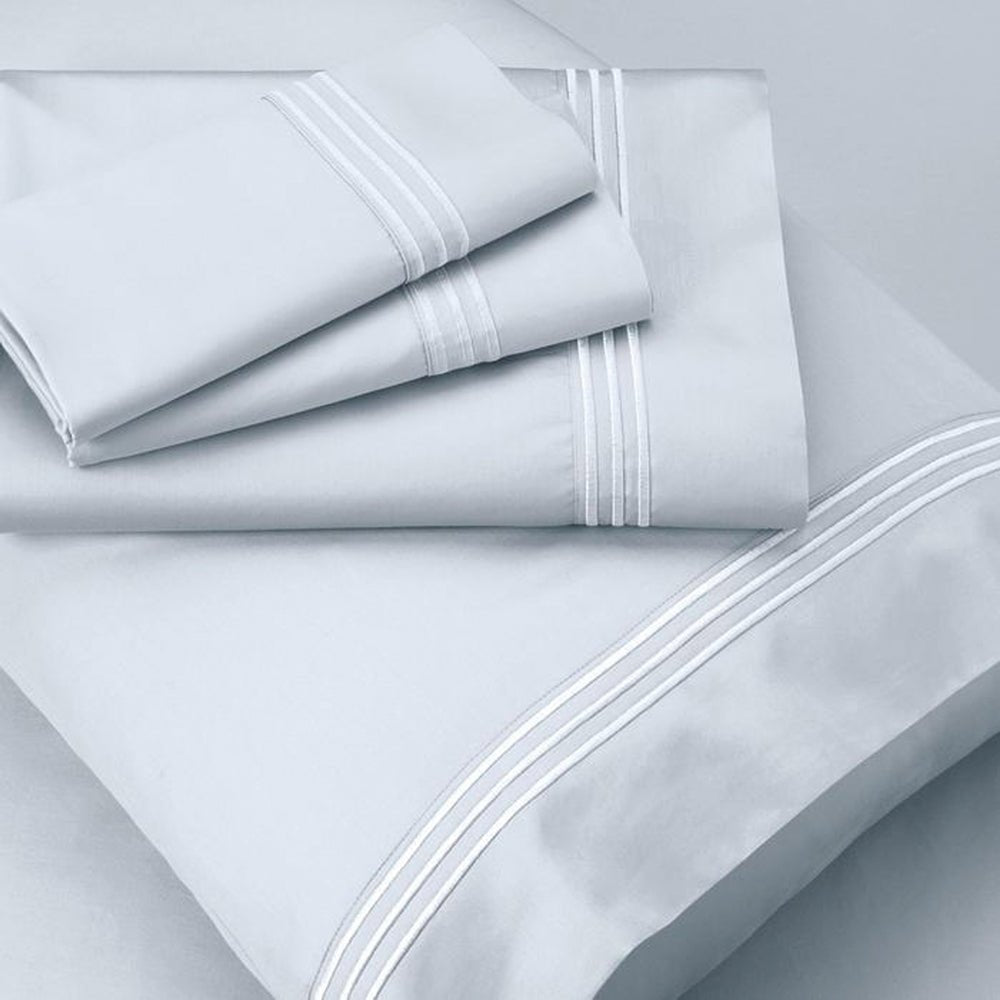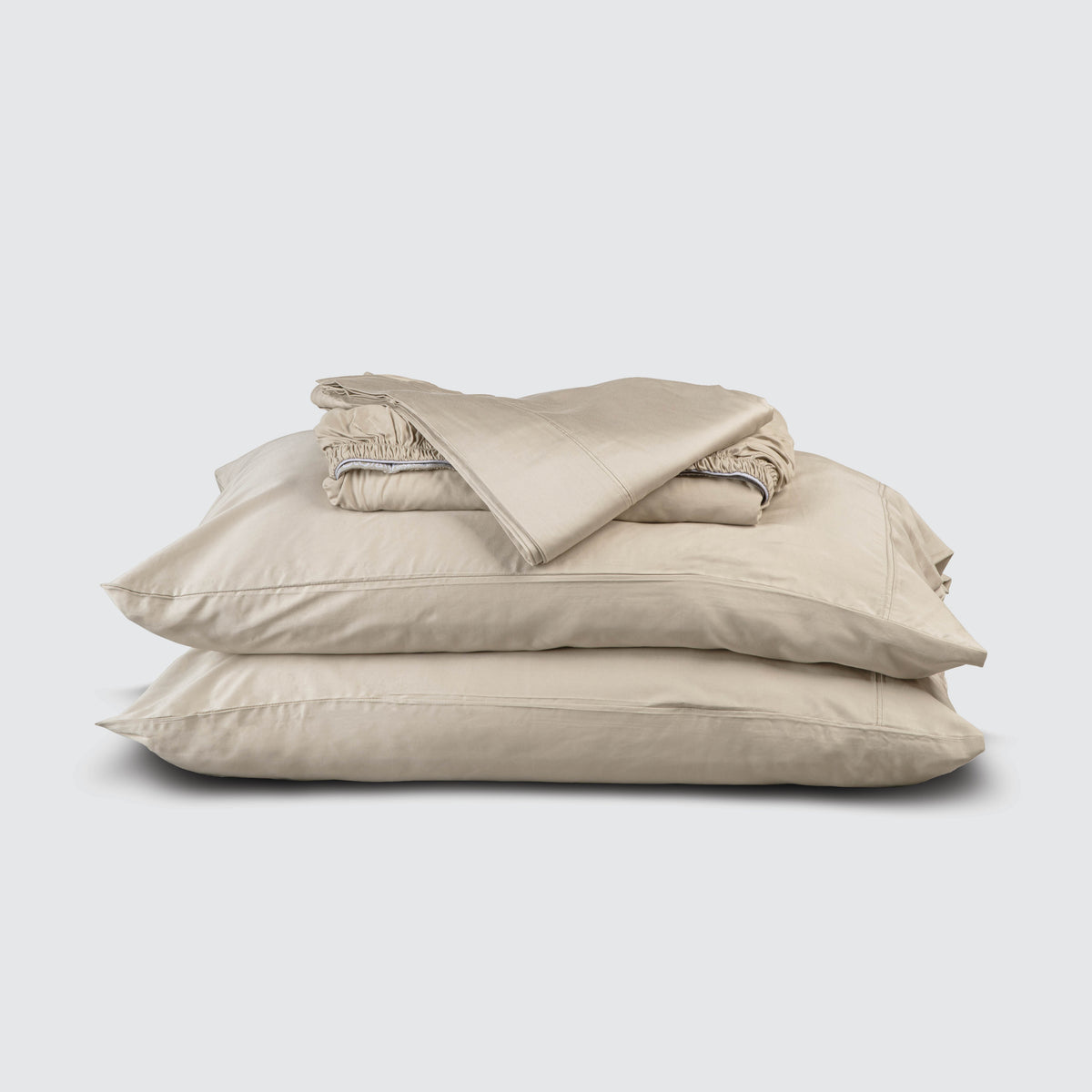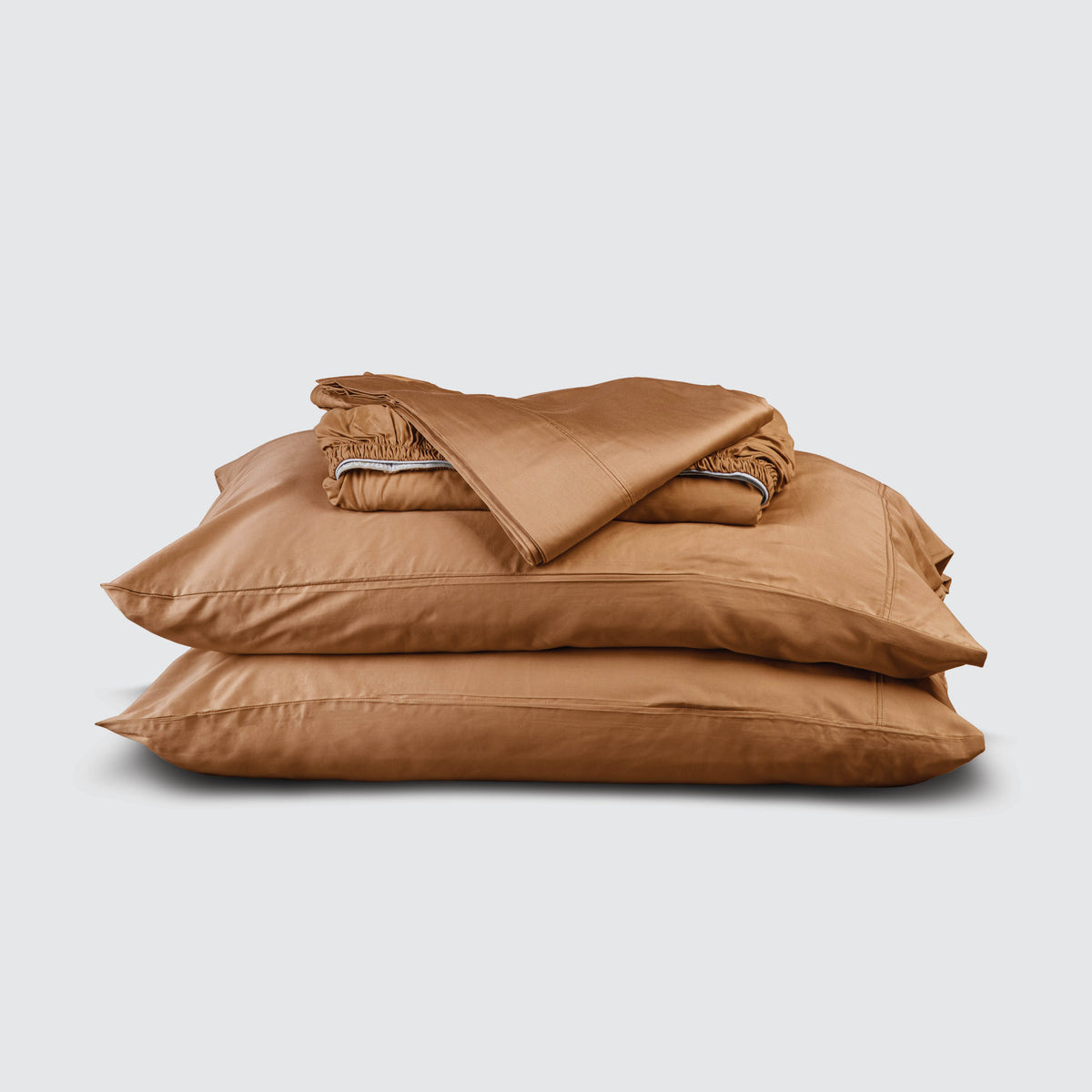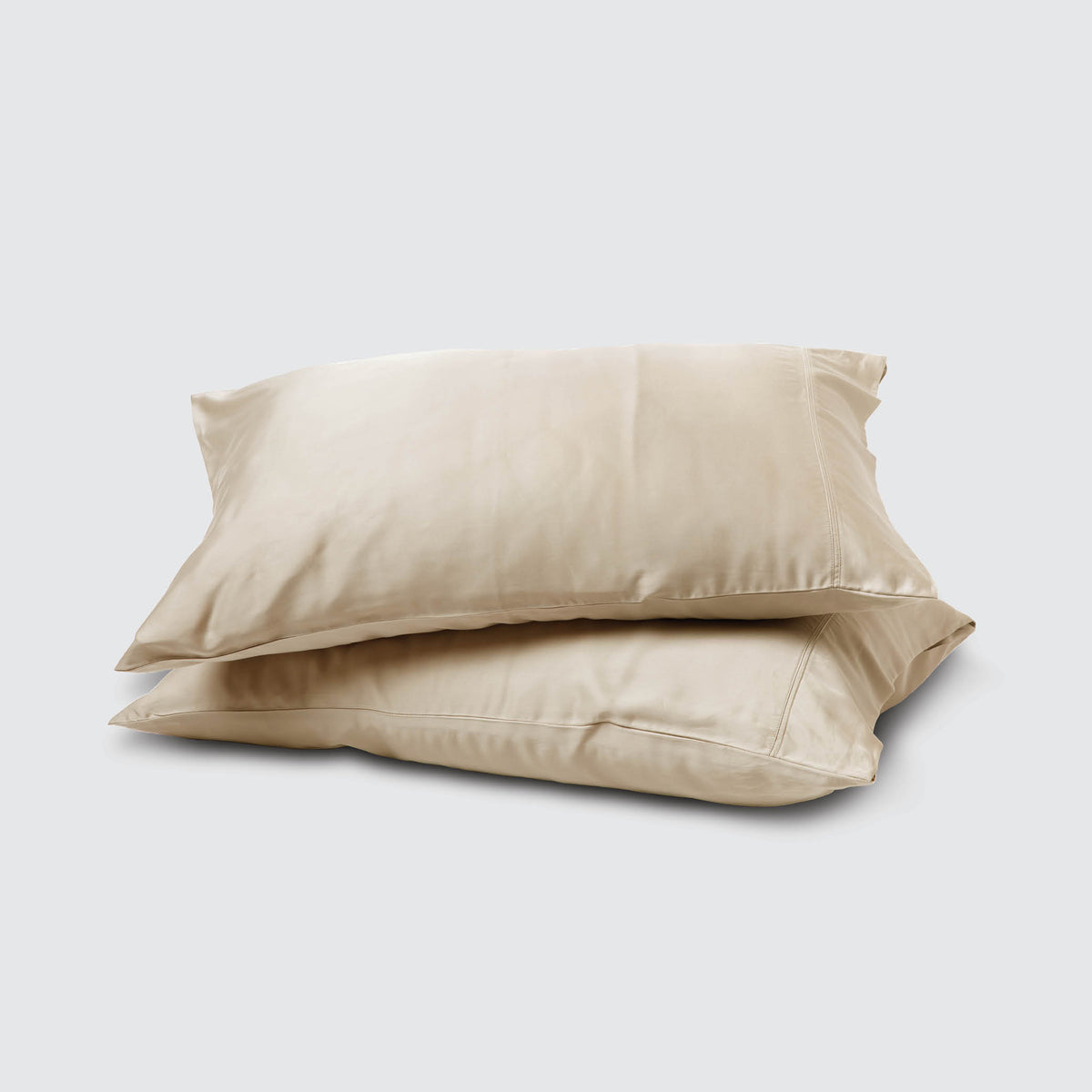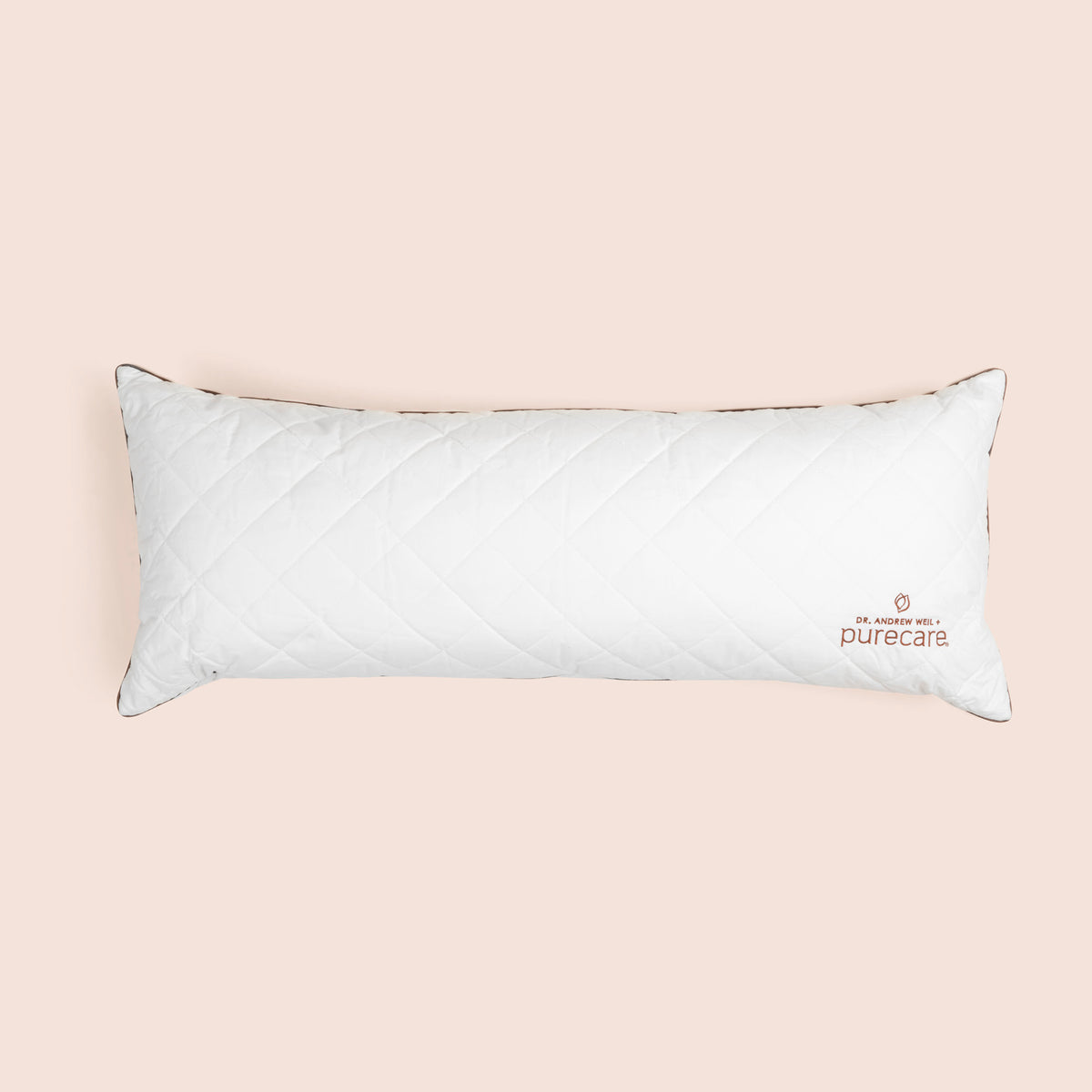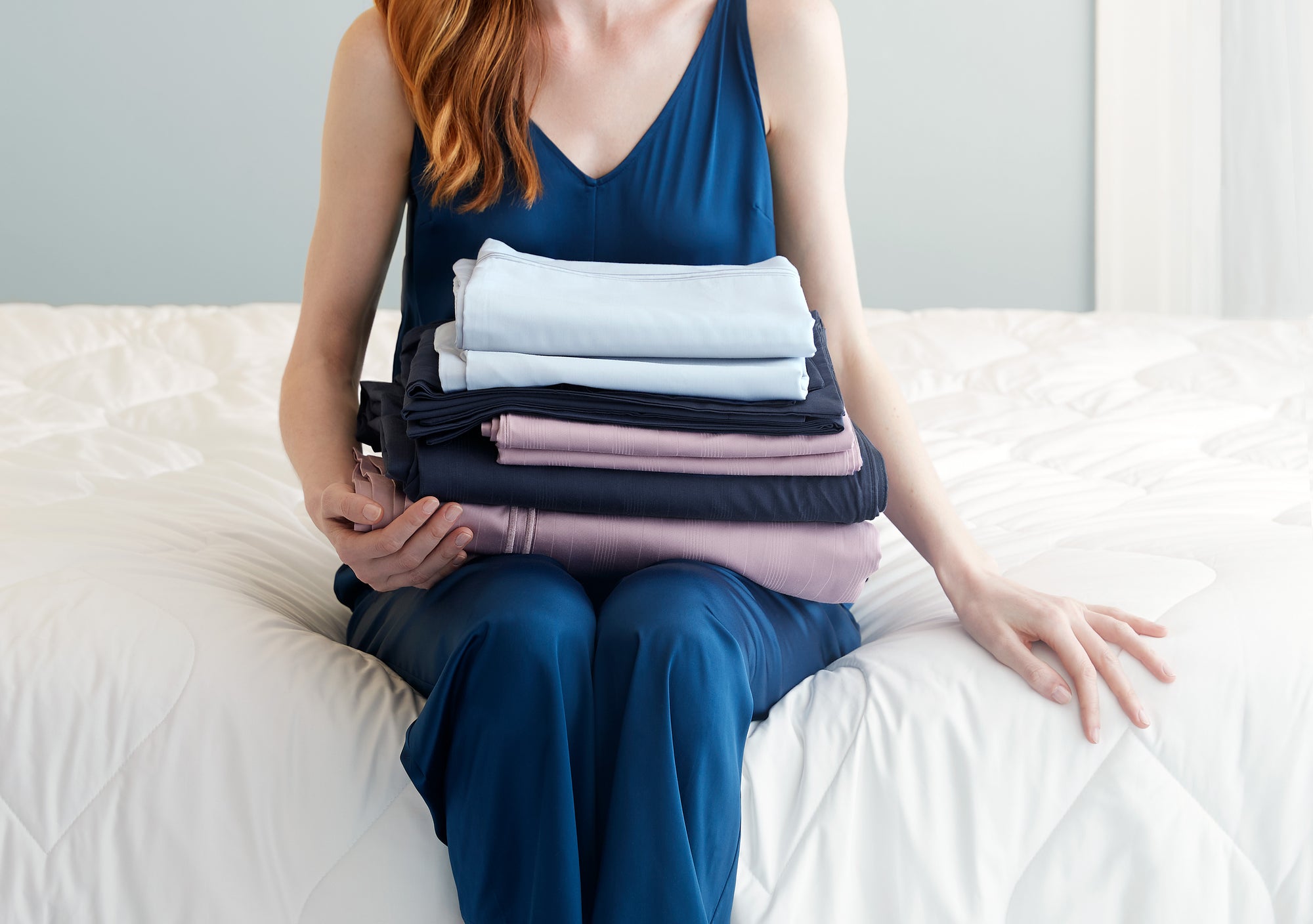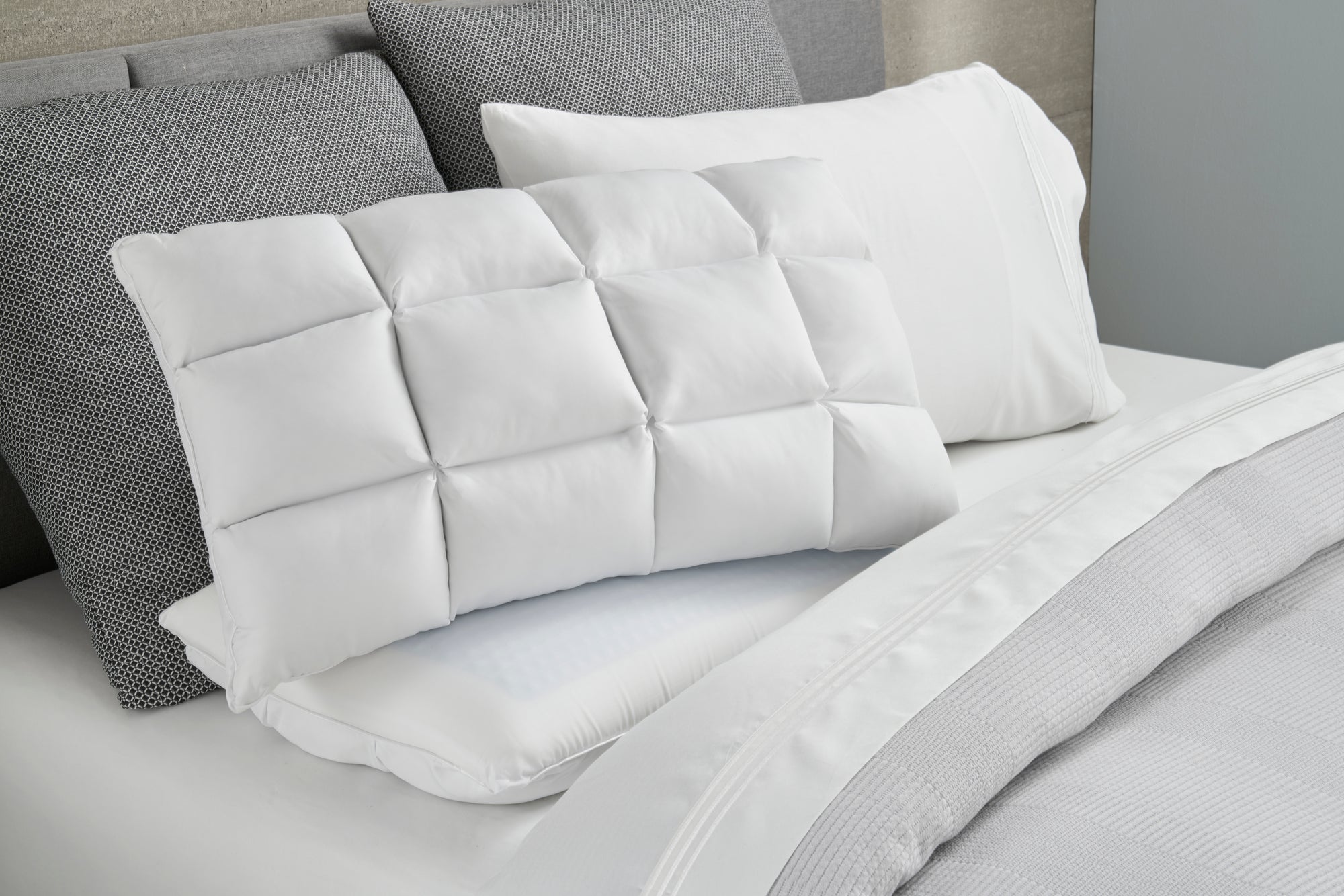The ancient Greek philosopher Heraclitus said, "Even a soul submerged in sleep is hard at work and helps make something of the world."
That can be an appealing philosophy to those of us wishing we could luxuriate in bed in order to manifest fresh ideas at work. The reality is a little more complicated. Truly clearing your mind to cultivate fantastic dreams comes from getting to sleep, staying asleep, and waking rested – not just grabbing a nap to try to make up for our nighttime sleep debt.
Enter the perfect sheets for an ideal night's sleep.
Bedding can facilitate restful, creative sleep, but it can be challenging to differentiate all our choices to uncover the bedding made to nurture us best. In the case of percale vs. sateen, it's especially difficult. Both percale and sateen are high-quality sheets that can fuel your luxurious dream life. So what's the difference?
We're breaking down the differences from weave to fabric, feel, and who each type of sheet is best for. Your perfect dream world is just a fresh set of sheets away, so let's get started.
Differences in Sateen vs. Percale Bed Sheet Weaves

A close-up view of percale sheets and their crisp basket weave
Sateen sheets differ from their percale counterparts in their weave which affects the final feel between the two fabric types. Even when both are made using the same cotton fabric, their weaves make percale sheets crisp and matte compared to sateen sheets, which are warmer and silkier.
The differences are due to the weave pattern: sateen sheets have a satin weave that involves floating multiple strands of fiber over cross-threads before they're woven underneath, giving sateen sheets a lustrous feel. With more fibers close to the surface of the fabric, you'll feel that luxurious thickness. A percale weave, with a simple "under then over" design is the most breathable, like linen.
|
Sateen |
Percale |
|
|
Weave Pattern |
Over-over-over-under |
Over-under-over-under |
|
Weave Tightness |
Looser |
Tighter |
|
Finish |
Silky finish |
Matte finish |
|
Weight |
Heavy |
Light |
Differences Between Sateen vs. Percale Sheet Textures

Sateen sheets showing off their luxurious shine up close
The difference between sateen and percale weaves affords each its own sheen and texture. When both are of similar thread counts and fabrics, you can expect differences in how they feel against your skin:
|
|
Sateen |
Percale |
|
Feel |
Buttery, liquid, honey-like, satin-like, soft |
Crisp, may rustle |
|
Breathability |
Feels cool, but can warm quickly |
Highly breathable, airy |
|
Feel Over Time |
Soft from the beginning |
Softens over time |
|
Drape |
Drapes well but bunches easily |
Stiffer. Stays in place well |
|
Sensitivity |
Smoother for those with sensitive skin |
Rougher, especially when new |
Differences in Caring for Sateen vs Percale
Both sateen and percale are moderately durable fabrics with high-end weaves that can last years. Yet, to care for them best, you'll want to take a gentler approach to sateen, which can wear faster than the tight weave of percale. While sateen bedding can feel softer than cotton percale, it can be easier to snag and can lose its sheen over time depending on the fibers used.
|
Sateen |
Percale |
|
|
Washing |
Washable in the gentle cycle. Line dry or tumble on low heat to extend the life of these sheets. |
Machine washing and drying are ok. |
|
Wrinkles |
Wrinkle-resistant |
More prone to wrinkles. Can iron to highlight percale's crisp feel. |
|
Durability |
Moderately durable. While a loose weave means these sheets could be more easily snagged than percale, quality sateen sheets will last the lifetime of a 1-2 year warranty. |
Excellent durability |
Differences Between Percale and Sateen Sheet Temperatures
Sateen's loose weave can feel luxurious, like hotel sheets. That “heaviness” of handfeel is one reason why hot sleepers are often partial to percale, which offers a lightweight, breathable feel in hot weather. Nevertheless, sleepers use both types of sheets year-round. Both can be good choices provided you understand how you regulate temperature, and the environment of your climate and bedroom align with your favorite choice.
|
Sateen |
Percale |
|
|
Touchability |
Cozy, heavy, and luxurious |
Cool, light, and breathable |
|
Warm Climates |
Feels cozy, but can be used year-round |
Cooling in warm climates. One of the best choices for breathability and moisture-wicking. |
|
Cool Climates |
Feels cozy, but can be used year-round by cool sleepers looking for warmth. |
Can be a good choice year-round, especially for warm sleepers. |
Beyond Percale and Sateen: Fabrics and Thread Counts
Percale and sateen are weaves. Though they're typically made from cotton fibers, they can differ significantly in the type of fibers used. For instance, you may find the following differences that can either add to or minimize differences between these two choices:
|
Sateen |
Percale |
|
|
Types of Fabric |
Cotton fibers are "mercerized," a treatment that seals the fibers and makes them more durable, as well as smoother and more reflective. It can be blended with synthetic fibers, wool, or lyocell (made from sustainably-sourced tree pulp). |
Cotton, like Purecare's Garment Washed Percale sheet set, is often pre-washed for added softness. You may also find percale sheets made from (or blended with) polyester, rayon, nylon, silk, or bamboo. |
|
Effects of Blended Fabrics |
Lyocell fibers are known for their breathability and moisture-wicking properties, so they add coolness that cotton sateen can't achieve. Purecare's Tencel (lyocell) sateen sheets are cooler than cotton sateen, while retaining the shimmery, buttery surface feel. |
Synthetics can reduce the wrinkliness of percale, while blending cotton with linen or rayon can add a silky feel more like sateen. |
|
Thread Count |
Sateen is more densely woven than percale regardless of thread count. Add more threads per square inch, and you'll increase heaviness, reducing breathability. |
Low thread counts add to breathability, while higher thread counts can imitate a sateen finish. |
Percale or Sateen? Which is the Best Bedding for You?
Individual and cultural characteristics have a lot to do with sheet preference. Did you know that more U.S. sleepers back sateen weaves while in Europe, percale reigns supreme? It’s simply a matter of personal preference.
And because of the individual characteristics of the fibers and sheet sets out there, you may find some of the best percale fabric and percale sheet sets mirror sateen in terms of shine. It's all relative.
However, in general, you'll find this guide can help you distinguish between the two weaves so that you have a sense of your personal preference for the look and feel of your ideal bedding. Just keep in mind that different companies emphasize different fibers and thread counts in order to make new combinations that speak to their customers best.
After all, sleepers tend to have a preference for cool, light fabrics versus heavy, silky ones, and know whether they (and their partners) sleep warm or hot. Making your purchase with your own sleep environment, partner, temperature, and climate in mind can launch you on your journey to your own perfect sleep experience.
But which option is right for you is a matter of personal taste. All materials have benefits and drawbacks, and your unique sleep habits and preferences can help guide you to the one and only material for you.
And don’t forget—Mix, Match, and Save up to 40% off all season long when you refresh your favorite sleep wellness essentials with us at purecare.com!







